Satellite Docking Experiment (SpaDeX)
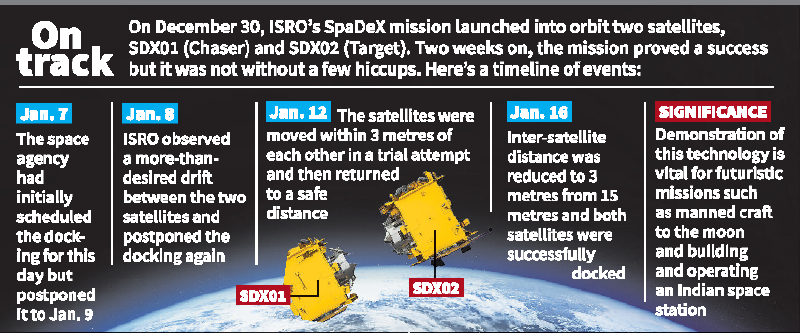
- 17 Jan 2025
In News:
The Indian Space Research Organisation (ISRO) achieved a historic milestone by successfully executing a satellite docking experiment, making India the fourth country after the United States, Russia, and China to accomplish this feat. This advancement represents a significant leap in India's space capabilities, positioning the nation at the forefront of space exploration and in-orbit servicing.
Key Highlights:
- The Space Docking Experiment (SpaDeX) is a critical technological demonstration by ISRO aimed at developing autonomous docking and undocking capabilities in space.
- The mission involves two satellites, SDX01 (Chaser) and SDX02 (Target), which were launched aboard PSLV C60 on December 30, 2024.
- The docking maneuver was overseen by the Mission Operations Complex (MOX) at the ISRO Telemetry, Tracking, and Command Network (ISTRAC) and was successfully completed in the early hours of January 18, 2025.
Key Steps in the Docking Process:
- Manoeuvre from 15m to 3m hold point.
- Precision docking initiation, leading to spacecraft capture.
- Retraction and rigidization for stability.
- Successful control of the docked satellites as a single object.
Significance of the Mission
- Technological Advancement: The docking of two spacecraft in orbit is a crucial capability that paves the way for:
- Autonomous spacecraft operations
- Refueling and maintenance of satellites
- Space station development
- Lunar and interplanetary missions
Future Applications
- Manned Missions: Enables India to develop technology for manned lunar missions and future space station operations.
- Satellite Servicing: Allows repair, maintenance, and extension of satellite lifespan, reducing costs and space debris.
- Sample Return Missions: Essential for lunar and planetary sample retrieval, crucial for deep-space exploration.
Challenges and Overcoming Setbacks
The SpaDeX docking was initially scheduled for January 7, 2025, but was postponed due to the need for further ground validation and an unexpected drift between the satellites. The issue was later resolved, and the docking was executed with precision.
The Road Ahead
Undocking and Power Transfer Demonstration
- ISRO will follow up with power transfer checks between the docked satellites.
- The satellites will later undock and operate separately for the remaining mission duration of up to two years.
Expanding Space Capabilities
- The successful execution of SpaDeX aligns with India’s plans for an independent space station by the 2030s.
- Strengthens India’s position in international space collaborations and commercial space services.
Conclusion
The SpaDeX mission represents a landmark achievement for India’s space program, placing it among the elite nations capable of satellite docking. This breakthrough will serve as a foundation for India’s ambitious future missions, including deep-space exploration, human spaceflight, and interplanetary research. As ISRO continues to develop advanced space technologies, India is set to play a crucial role in the future of global space exploration.
Unified District Information System for Education Plus (UDISE+) Report

- 10 Jan 2025
In News:
The Unified District Information System for Education Plus (UDISE+) report for 2023-24 reveals a significant decline in school enrolment across India, highlighting critical challenges in the education sector. The total enrolment in grades 1-12 fell by over 1.55 crore students, from 26.36 crore (2018-2022 average) to 24.8 crore in 2023-24. This represents a 6% drop, with the biggest declines occurring in government schools.
Key Findings:
- Enrolment Decline:
- In 2023-24, enrolment decreased from 25.17 crore in 2022-23 to 24.8 crore.
- The drop was not only in government schools (5.59%) but also in private schools (3.67%).
- States like Bihar, Uttar Pradesh, and Maharashtra saw the largest decreases.
- The decline in enrolment is despite an increase in the number of schools, from 14.66 lakh in 2022 to 14.72 lakh in 2023.
- Methodology Change:
- A significant change in the data collection methodology occurred in 2022-23, including linking enrolment to Aadhaar numbers, aimed at reducing data duplication.
- While this has improved data accuracy, it has also led to the removal of inflated figures, explaining part of the enrolment drop.
- Despite these changes, there has been a notable decline of 37 lakh students from 2022-23 to 2023-24, which remains unexplained in the report.
- Gender and Age Trends:
- Boys’ enrolment declined by 6.04%, and girls’ by 5.76%, reflecting a uniform drop across gender groups.
- The dropout rates increase as students progress through school, with the highest dropout at the secondary level.
- Infrastructure and Facilities:
- While most schools have basic facilities like electricity and gender-specific toilets, advanced infrastructure like functional computers (57%) and internet access (53%) is lacking in nearly half of schools.
- This technological gap exacerbates regional disparities and affects educational quality, particularly in rural areas.
- State-Specific Impact:
- Jammu and Kashmir, Assam, Uttar Pradesh, and Madhya Pradesh saw the highest reductions in the number of schools.
- Many school closures or mergers have led to increased distances for students, causing further dropouts during re-admission processes.
Socio-Economic Barriers:
- Economic hardships, migration, and inadequate facilities contribute to the enrolment decline.
- Low-income families and backward regions struggle to prioritize education, further affecting enrolment and retention.
Government Initiatives:
- Initiatives like the National Education Policy (NEP) 2020, Sarva Shiksha Abhiyan, and Right to Education Act (RTE) have made strides in primary education but face challenges in secondary education.
- Education spending has hovered around 4-4.6% of GDP, which is insufficient to meet the needs of the education system.
Moving Forward:
- Targeted Interventions: Focus on expanding vocational training, incentivizing school attendance, and improving digital infrastructure in schools.
- Address Regional Disparities: Conduct audits to address school shortages in densely populated areas and consolidate underutilized urban schools.
- Enhancing Teacher Quality: Invest in teacher training and encourage innovative teaching methods.
- Community Engagement: Promote local participation in school management to address specific educational needs.
Conclusion:
The UDISE+ 2023-24 report underscores the need for urgent reforms in India's education system, focusing on increasing enrolment, reducing dropout rates, and ensuring equitable access to quality education. By addressing these challenges with targeted policies, India can move closer to achieving its educational goals.
Impeachment of Judges
- 12 Dec 2024
In News:
The recent controversy surrounding remarks made by Justice Shekhar Kumar Yadav of the Allahabad High Court has prompted calls for his impeachment. During an event organized by the Vishwa Hindu Parishad (VHP), Justice Yadav made statements that were perceived as communal, leading to concerns over judicial impartiality. This incident has reignited discussions about the impeachment process for judges in India, highlighting the delicate balance between judicial independence and accountability.
Impeachment Process for Judges in India
In India, the impeachment process for judges, although not explicitly mentioned in the Constitution, serves as a mechanism to ensure judicial accountability while safeguarding judicial independence. The process is outlined under Articles 124 and 218 of the Indian Constitution, which govern the removal of Supreme Court and High Court judges, respectively.
Grounds for Impeachment
Judges in India can be removed on two grounds:
- Proved Misbehavior: Conduct that breaches the ethical standards of the judiciary.
- Incapacity: A judge’s inability to perform judicial duties due to physical or mental infirmity.
These grounds are clearly specified to prevent arbitrary removal, ensuring that the process remains fair and just.
Steps in the Impeachment Process
- Initiation of Motion: The process begins when a motion for impeachment is introduced in Parliament, either in the Lok Sabha or Rajya Sabha. The motion must be supported by at least 100 members of the Lok Sabha or 50 members of the Rajya Sabha. This ensures significant parliamentary backing before the motion proceeds.
- Formation of an Inquiry Committee: If the motion is admitted, a three-member inquiry committee is constituted. This includes a Supreme Court judge, the Chief Justice of a High Court, and a distinguished jurist. The committee conducts a thorough investigation into the allegations.
- Committee Report and Parliamentary Debate: Following the investigation, the committee submits its findings. If the judge is found guilty, the report is debated in Parliament. Both Houses must approve the motion by a special majority, which requires a two-thirds majority of members present and voting, as well as a majority of the total membership.
- Final Removal by the President: Once the motion is passed in both Houses, it is presented to the President, who issues the removal order.
Safeguards Against Misuse
The impeachment process includes several safeguards to prevent misuse:
- High Threshold for Initiation: The requirement for significant support from Parliament ensures that the process cannot be initiated frivolously.
- Objective Inquiry: The inquiry committee, comprising legal experts, guarantees an impartial investigation.
- Parliamentary Scrutiny: Both Houses of Parliament are involved, ensuring that the process undergoes democratic scrutiny.
Challenges and Precedents
Despite the rigorous process, no Supreme Court judge has been successfully impeached to date. Past attempts, such as those against Justice V. Ramaswami (1993) and Chief Justice Dipak Misra (2018), were unsuccessful. These instances demonstrate the complexities involved in the impeachment process.
Guidelines for Judges’ Public Statements
Judges in India are entitled to freedom of speech, but they are expected to exercise caution in public statements to maintain the dignity of their office. The Bangalore Principles of Judicial Conduct (2002) and the Restatement of Values of Judicial Life (1997) outline key principles for judicial conduct, including:
- Non-Interference in Political Matters: Judges should refrain from commenting on political issues to avoid any perception of bias.
- Impartiality: Judges must avoid statements that could prejudice ongoing cases or align them with specific ideologies.
Upholding Judicial Impartiality in a Diverse Society
To maintain impartiality, judges must interpret laws based on constitutional values of justice, equality, and secularism. Furthermore, the judiciary must ensure representation from diverse backgrounds to foster inclusivity and reduce systemic biases. Training programs focused on cultural competence and social diversity are essential to ensure that judges are sensitive to the needs of marginalized communities.
Conclusion
The impeachment process, while stringent, plays a critical role in maintaining judicial accountability in India. As seen in the case of Justice Yadav, judicial conduct, particularly public statements, must be carefully scrutinized to preserve the integrity of the judiciary. Upholding impartiality and adhering to constitutional values are paramount in ensuring that the judiciary continues to function as a neutral arbiter in India’s democracy.
Building on the Revival of the Manufacturing Sector
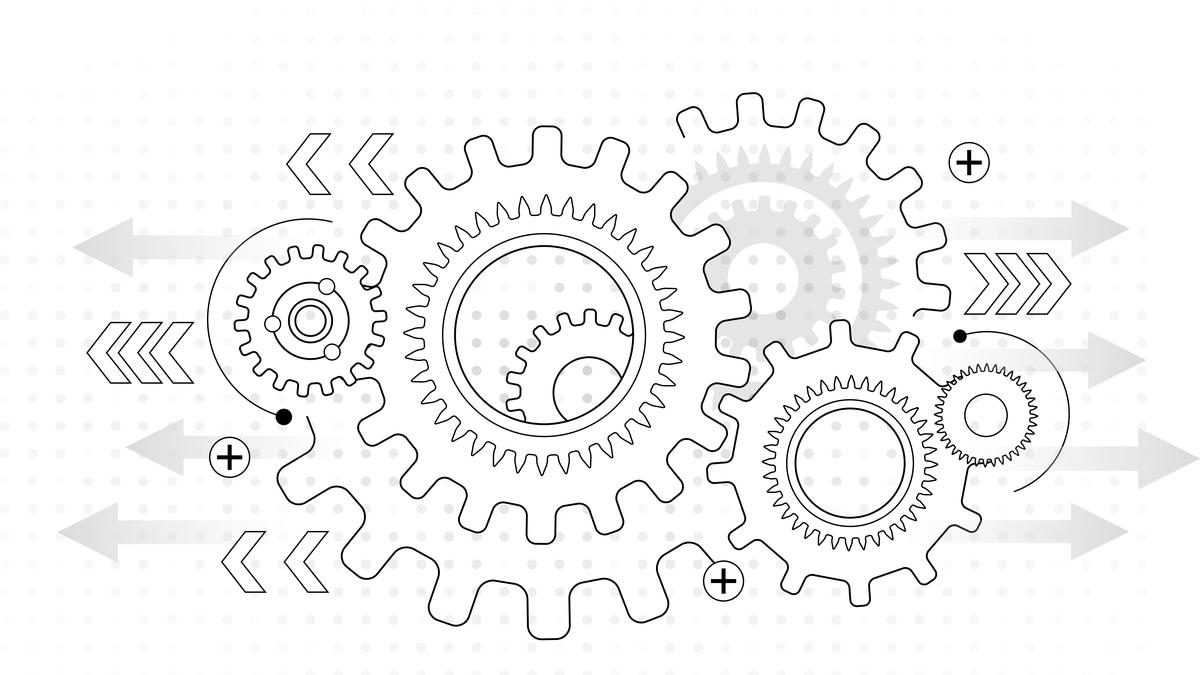
- 07 Dec 2024
In News:
India’s manufacturing sector has shown remarkable signs of recovery and growth, thanks to strategic policy initiatives like the Production Linked Incentive (PLI) scheme. To fully capitalize on this momentum and become a global manufacturing hub, however, deeper reforms are needed.
The Success of the PLI Scheme: A Catalyst for Growth
The government’s PLI scheme has been instrumental in revitalizing key sectors like electronics, pharmaceuticals, automobiles, and textiles. It has not only boosted production but also increased exports and job creation. According to the Annual Survey of Industries (ASI) 2022-23, manufacturing output grew by an impressive 21.5%, while gross value added (GVA) increased by 7.3%. Sectors such as basic metals, refined petroleum products, food products, and motor vehicles, which are beneficiaries of the PLI scheme, contributed 58% of total manufacturing output, registering growth of 24.5%.
This success underlines the potential of India’s manufacturing sector, with the PLI scheme acting as a key enabler. However, while the recovery is promising, there are significant challenges to overcome to sustain long-term growth.
Expanding PLI Incentives to New Sectors
The PLI scheme has largely benefitted traditional industries like electronics and automotive manufacturing. To further accelerate growth, the scope of the scheme must be extended to labour-intensive sectors such as apparel, footwear, and furniture, which hold immense potential for job creation. Additionally, emerging sectors like aerospace, space technology, and maintenance, repair, and overhaul (MRO) services offer new avenues for growth. By diversifying the incentive structure to these sectors, India could establish a more robust and resilient manufacturing ecosystem.
In sectors like capital goods, where India is heavily import-dependent, the potential for reducing supply chain vulnerabilities is significant. Moreover, promoting green manufacturing and advanced technologies could further bolster India’s competitiveness in global markets.
Addressing the Divergence Between Output and Value Addition
Despite a surge in production, India’s gross value added (GVA) has not kept pace with output growth. The ASI data shows that input prices soared by 24.4% in 2022-23, indicating that while production volumes are up, industries are grappling with high input costs. A more streamlined import regime could mitigate these costs. Simplifying tariffs into a three-tier system (for raw materials, intermediates, and finished goods) would reduce input costs, enhance competitiveness, and improve integration into global value chains.
Regional Imbalance: A Barrier to Inclusive Growth
The manufacturing sector’s growth is heavily concentrated in a few states such as Maharashtra, Gujarat, Tamil Nadu, Karnataka, and Uttar Pradesh, which account for over 54% of manufacturing GVA. This concentration not only restricts equitable development but also hampers the overall growth potential of the sector. To address this, it is crucial that states actively participate in India's manufacturing growth story by implementing market reforms in land, labour, and power. Additionally, infrastructure development and investment promotion in less industrialized regions could help balance growth and ensure that the benefits of manufacturing reach all corners of the country.
Fostering MSME Growth and Enhancing Female Workforce Participation
Micro, small, and medium enterprises (MSMEs) contribute about 45% of India’s manufacturing GDP and employ around 60 million people. To scale these businesses and integrate them into global value chains, PLIs should be tailored to accommodate their needs, such as lowering capital investment thresholds and reducing production targets.
Equally important is the enhancement of female workforce participation. Studies suggest that India’s manufacturing output could increase by 9% if more women enter the workforce. The development of supportive infrastructure, such as hostels and childcare facilities, can play a pivotal role in enabling women’s participation, thus driving inclusive growth.
Conclusion: The Path Forward
To transform into a developed economy by 2047, India must continue to focus on strengthening its manufacturing sector. According to industry estimates, manufacturing’s share in Gross Value Added (GVA) can rise from 17% to 25% by 2030 and further to 27% by 2047. Achieving this will require sustained efforts to enhance competitiveness through business reforms, cost reduction, and policy support. India is well-positioned to harness its manufacturing potential, but timely and focused interventions are necessary to turn this vision into reality.
Reflections on Baku’s ‘NCQG Outcome’ at COP29
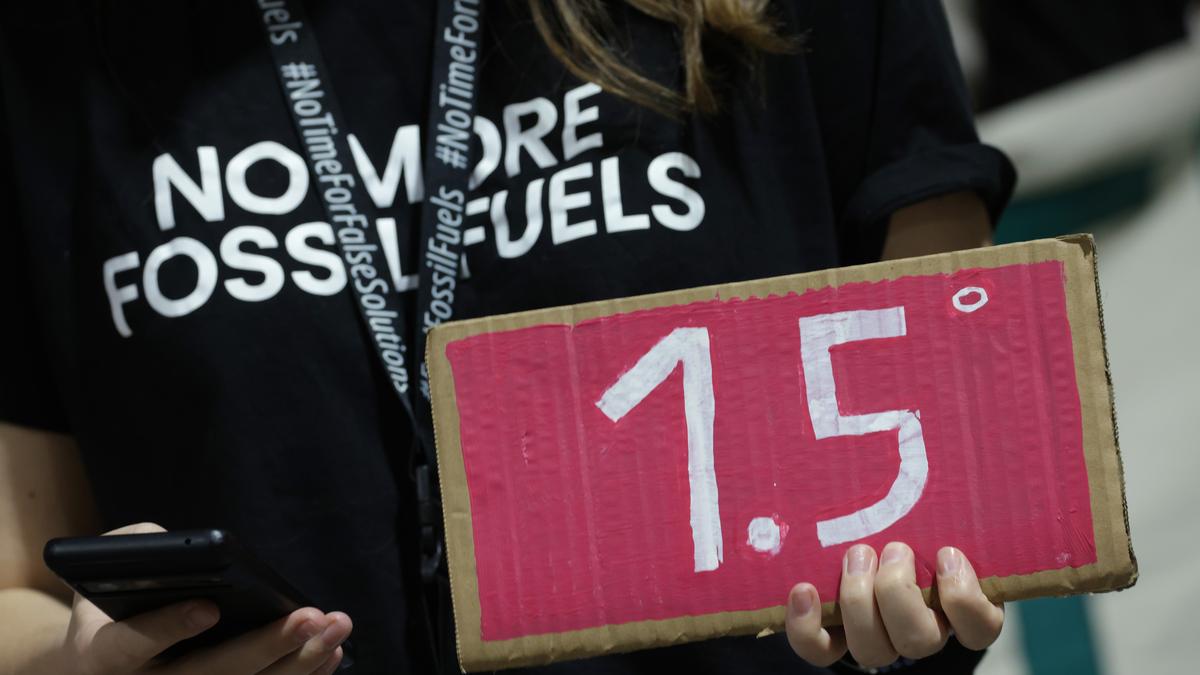
- 06 Dec 2024
In News:
The recently concluded COP29 in Baku, Azerbaijan, has brought the spotlight back to climate finance, particularly in relation to the New Collective Quantified Goal (NCQG). As the global community grapples with the escalating climate crisis, the discussions and outcomes from the COP29 summit are pivotal in shaping future climate action. However, the agreed-upon financial targets, which were expected to be a step towards transformative climate justice, have sparked significant concern, particularly among developing nations.
The Need for Climate Finance: A Global Responsibility
Climate finance is essential for supporting developing countries, which bear the brunt of climate change despite contributing minimally to global emissions. The Intergovernmental Panel on Climate Change (IPCC) has stressed the need to limit global warming to 1.5°C above pre-industrial levels, yet current policies could lead to a rise of up to 3.1°C. To counter this, developing nations require financial assistance to transition to green energy, adapt to climate impacts, and implement their Nationally Determined Contributions (NDCs).
The upfront costs of green technologies, such as renewable energy, are high, and while they offer long-term savings, their initial investments remain a significant barrier. Additionally, many developing countries face fiscal constraints, making it even more difficult to adopt climate-friendly technologies without external financial support.
The Role of NCQG in Addressing Climate Finance Gaps
The NCQG, an evolution of the 2010 $100 billion annual commitment, aims to provide clarity and accountability in climate financing. Established as a framework to ensure financial resources for climate action, the NCQG should ideally focus on the evolving needs of the Global South. However, at COP29, the target agreed upon was a mere $300 billion annually by 2035, far from the $1.3 trillion that developing countries had requested. This amount falls drastically short of what is necessary to meet the ambitious climate goals and fails to represent a transformative shift in financial flows.
Key Challenges and Discontent with the Outcome
Several challenges have been raised regarding the COP29 outcome:
- Equity and Responsibility: Developed nations are expected to bear a larger share of the financial burden, in line with the principle of 'Common but Differentiated Responsibilities' (CBDR). However, the NCQG outcome bypasses this principle, offering insufficient funds for climate action in developing countries.
- Types of Finance: There is debate over whether private finance should count towards the goal. Developing countries have stressed the importance of public finance over loans, which add to their debt burdens.
- Insufficient Commitment: While the $300 billion annual pledge is a step forward, it is far from adequate. The global climate finance needs, estimated at $5 trillion to $7 trillion by 2030, require bolder commitments from developed nations.
India's Position and Domestic Efforts
At COP29, India emphasized the need for developed countries to fulfill their financial commitments, advocating for at least $1.3 trillion annually until 2030. India, despite being a developing country, has also made significant strides in climate action through domestic policies. The 2024-25 Union Budget allocated substantial funds to renewable energy projects, including ?19,100 crore for the Ministry of New and Renewable Energy. These efforts demonstrate India’s commitment to climate goals, though the financial flow remains insufficient.
Conclusion: The Road Ahead
The NCQG outcome at COP29 highlights the ongoing disparities in global climate finance commitments. While the $300 billion annual target is a step forward, it does not align with the urgency or scale required to tackle the climate crisis. To achieve a just and equitable transition to a sustainable future, future climate finance discussions must prioritize transparency, accountability, and fairness, ensuring that developed nations shoulder their fair share of the responsibility. The path forward requires unwavering international cooperation to ensure that developing countries receive the necessary support to mitigate and adapt to the impacts of climate change.
Current Representation of Women in CAPFs

- 04 Dec 2024
In News:
The Central Armed Police Forces (CAPFs) of India, comprising forces like CRPF, BSF, CISF, and others, play a crucial role in maintaining internal security. Women’s participation in these forces has been historically limited, but recent efforts have focused on increasing their representation. As of 2024, women constitute only 4.4% of the total personnel in CAPFs, highlighting the slow progress despite various initiatives.
Current Representation and Changes Over Time
- Overall Representation: Women make up 4.4% of the 9.48 lakh-strong CAPFs. Within this, the Central Industrial Security Force (CISF) has the highest representation at 7.02%, followed by the Sashastra Seema Bal (SSB) at 4.43%, Border Security Force (BSF) at 4.41%, Indo-Tibetan Border Police (ITBP) at 4.05%, Assam Rifles at 4.01%, and Central Reserve Police Force (CRPF) at 3.38%.
- Growth of Women Personnel: From 15,499 women in 2014, the number has tripled to 42,190 in 2024, reflecting a steady increase in recruitment. However, the percentage remains low despite these gains.
- Recruitment Trends: In 2024, 835 women were recruited, with 5,469 more in the process. In 2025, 4,138 women are expected to be recruited.
Government Efforts and Parliamentary Committee Recommendations
- Policy Measures: The government has introduced several steps to encourage women’s participation in CAPFs, such as reservations in constable-level positions: one-third for CRPF and CISF, and 14-15% for border forces like BSF, SSB, and ITBP.
- Challenges in Recruitment: Despite these policies, recruitment has not kept pace with the targets. The 2022 Parliamentary Committee on Home Affairs expressed disappointment over the “abysmally low” number of women in CAPFs, noting that women made up only 3.68% of the forces at that time.
- Recommendations by Parliamentary Committees:
- The Home Affairs Committee recommended fast-tracking phase-wise recruitment of women, particularly in CISF and CRPF.
- The Standing Committee on Personnel (2023) suggested “soft postings” for women to avoid difficult working conditions, especially in remote or strenuous terrains. It also called for reservations for transgender individuals.
- In 2024, further steps like fee waivers, relaxed physical standards, and provisions for maternity and child care leave were introduced to make the work environment more inclusive.
Reasons Behind Low Representation
- Cultural Barriers: Traditional gender roles and societal expectations deter many women from pursuing careers in security forces.
- Work Environment: The demanding nature of the job, which includes postings in remote areas and high-risk operations, makes it less appealing, especially for women with family responsibilities.
- Infrastructure Issues: Lack of adequate accommodation, sanitation facilities, and safety measures for women are deterrents to joining and retaining female personnel.
Conclusion and Future Outlook
Although the representation of women in CAPFs has seen improvement, it remains below expectations due to persistent challenges. The government’s continuous focus on recruitment reforms, better working conditions, and policy incentives will be crucial to achieve gender parity in these forces. As societal attitudes evolve and the infrastructure improves, more women may be encouraged to serve in these vital security roles. Future efforts must include targeted recruitment drives and creating a more inclusive and supportive environment to enhance women’s participation in CAPFs.
Digital Arrests
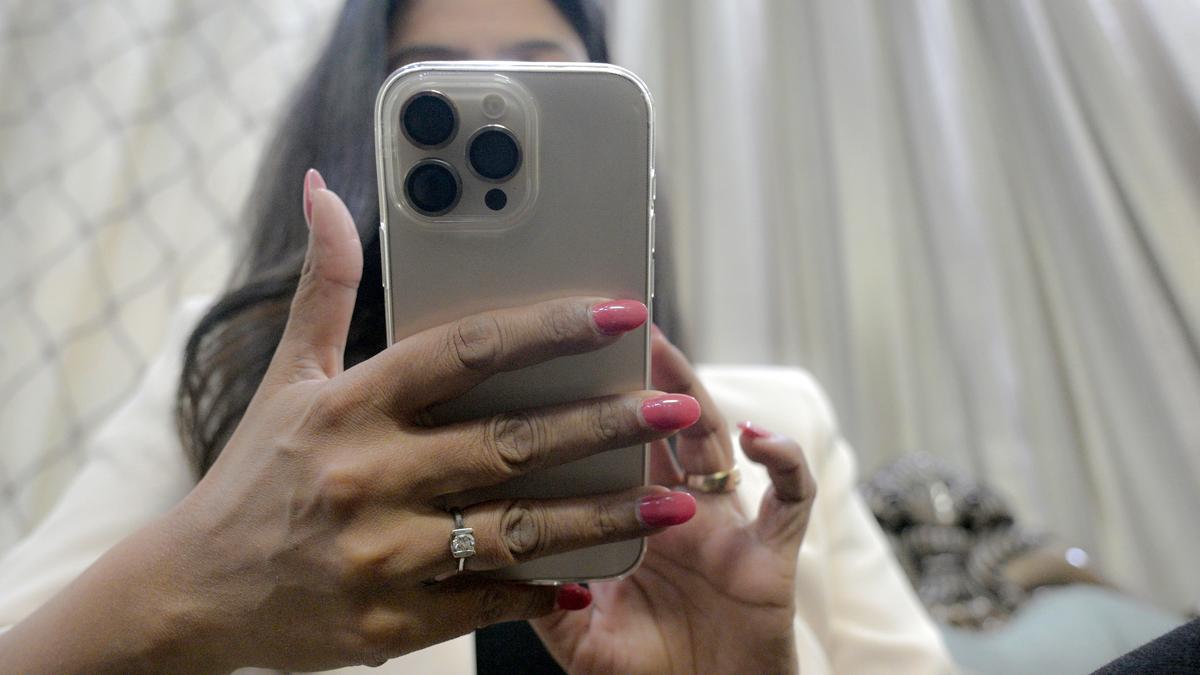
- 01 Dec 2024
In News:
In 2024, India has witnessed an alarming rise in cybercrime, particularly a new scam called "digital arrests." This type of fraud involves criminals impersonating law enforcement officials to extort money from victims. With more than 92,000 people targeted and ?2,141 crore defrauded from victims, these scams are rapidly becoming a significant concern for the public and law enforcement.
Nature of ‘Digital Arrests’
The modus operandi of digital arrest scams is sophisticated and emotionally manipulative. Cybercriminals contact victims through video calls, often using fake police officers' profiles and official documents to build credibility. They accuse victims of serious crimes such as money laundering or drug trafficking, claiming urgent action is needed to avoid arrest. The scammers create a false atmosphere of fear and urgency, convincing the victim to transfer large sums of money under the pretext of settling legal dues.
A notable example involves Ruchi Garg, who was targeted by scammers posing as police officers, falsely claiming her son was involved in a major scam. She was coerced into transferring ?80,000 before realizing it was a scam. Similar cases have affected hundreds, with perpetrators using AI-generated voices and fake visuals to amplify the deception.
The Growth of Cybercrime in India
Digital arrest scams are part of a broader increase in cybercrime in India. The Indian Cyber Crime Coordination Centre (I4C) has reported a rise in cyber fraud, with financial losses exceeding ?27,900 crore between 2021 and 2024. The most significant sources of these losses include stock trading scams, Ponzi schemes, and digital arrest frauds. As criminals adapt to emerging technologies and use social engineering tactics, the scale and complexity of scams are growing.
The surge in cybercrimes is fueled by vulnerabilities in India's digital landscape. With over 95 crore Internet users, many people, particularly the elderly or less tech-savvy, remain susceptible to such fraud. Cybercriminals often exploit this lack of awareness, combining fear and confusion to manipulate victims.
International Scope and Challenges
One of the challenges in combating digital arrests is the transnational nature of cybercrime. Scams often originate from countries like China, Cambodia, and Myanmar, where "scam compounds" run operations to train individuals in fraudulent techniques. These groups use virtual private networks (VPNs) and encrypted apps to conceal their identities and locations, making it difficult for Indian authorities to trace them.
Moreover, the involvement of mule bank accounts to launder defrauded money complicates investigations. Thousands of such accounts are identified and blocked regularly, but the flow of money continues through multiple channels, including cryptocurrencies.
Government Efforts and Preventive Measures
To address the growing menace of digital frauds, the Indian government has initiated several measures. The I4C, launched in 2020, aims to strengthen the response to cybercrimes by coordinating with various law enforcement agencies. The National Cyber Crime Reporting Portal allows citizens to report cyber fraud, while real-time alerts are sent to banks to prevent financial losses.
Additionally, the Cyber Crime Coordination Centre and other initiatives like Cyber Surakshit Bharat and CERT-In are working to enhance cybersecurity awareness and support victims. The Digital Personal Data Protection Act, 2023, also aims to regulate data security, which can reduce the sale of personal data on the dark web, a key enabler of these scams.
Conclusion
‘Digital arrests’ exemplify the evolving nature of cybercrimes in India. As digital threats become more complex and widespread, it is essential for citizens to remain vigilant and informed. Effective law enforcement, technological innovations, and public awareness are critical to reducing the impact of these scams and safeguarding the digital economy.
Biomedical Waste Regulations
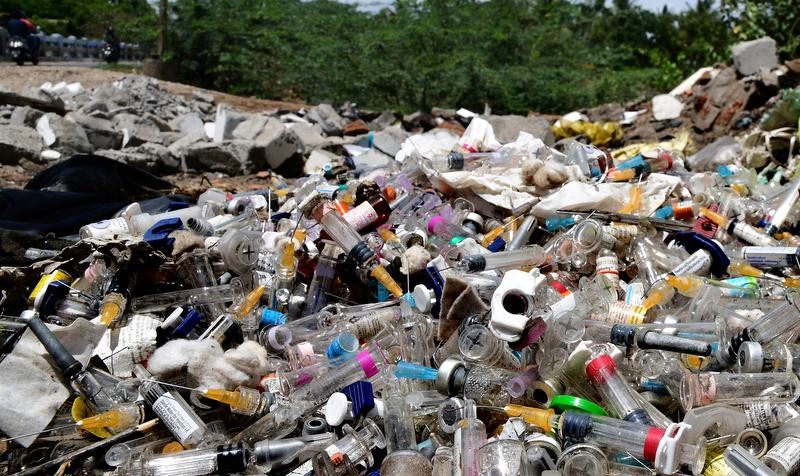
- 30 Nov 2024
The Emergence of HIV and Global Panic
In 1983, scientists Luc Montagnier and Robert Gallo independently identified the virus responsible for AIDS. By the mid-1980s, HIV/AIDS was perceived as a biological death sentence, with the virus primarily attacking immune cells, making medical intervention difficult. The epidemic quickly became associated with fear, ignorance, and stigma, as it was often linked to marginalized groups.
The "Syringe Tide" Incident and Public Outrage
In August 1987, the U.S. faced a public health crisis when discarded medical waste, including syringes and blood vials, washed up on beaches along the Atlantic coast. Known as the "Syringe Tide," this incident shocked the public and fueled anxiety, especially when children were seen playing with syringes. Traced to improper waste disposal in New York City, the event highlighted the hazardous nature of medical waste, which had been previously underestimated. Combined with the HIV/AIDS epidemic, this incident amplified public fear and economic losses of up to $7.7 billion due to the decline in tourism.
U.S. Response: Medical Waste Tracking Act of 1988
The widespread outrage led to the U.S. government passing the Medical Waste Tracking Act in 1988. This was the first law to formally categorize hospital waste as hazardous. The Act introduced stringent guidelines for the handling, transportation, and disposal of medical waste, establishing systemic regulation and oversight. It marked a significant turning point in both public health and environmental safety, changing how medical waste was managed in the healthcare sector.
India’s Journey in Biomedical Waste Management
Initial Steps and Delays
While the U.S. responded swiftly to the crisis, India’s approach to managing biomedical waste was slower. In 1986, India enacted the Environmental Protection Act, which marked the country’s first significant step towards environmental conservation. That same year, India identified its first HIV case. However, biomedical waste was not yet recognized as hazardous, and the Hazardous Waste (Management and Handling) Rules of 1989 failed to address the issue. As a result, local bodies were left to manage waste disposal, leading to inefficiencies.
Judicial Intervention and Legislative Action
In the 1990s, as pollution levels rose, particularly in urban areas like Delhi, the inadequacies of the system became apparent. In the landmark case Dr. B.L. Wadehra vs. Union of India (1996), the Supreme Court criticized Delhi’s waste management system, calling the city an "open garbage dump." This judgment led to a nationwide conversation on waste management and resulted in the Biomedical Waste (Management and Handling) Rules of 1998, marking the formal recognition of hospital waste as hazardous. The rules empowered the Central and State Pollution Control Boards to regulate waste disposal, ensuring accountability.
The Link Between HIV and Biomedical Waste Regulations
The HIV crisis highlighted the need for safe disposal practices to protect the environment and healthcare workers. While India charted its own course, the global response to HIV, particularly the U.S. model, influenced India’s approach to biomedical waste management. Over the years, India has made significant progress, with amendments to the rules in 2016 and 2020 to improve waste management technology and ensure safe disposal.
Current Challenges and Progress
- Ongoing Issues in Biomedical Waste Management: Despite significant progress, challenges remain, especially in rural and resource-limited areas. Mishandling of biomedical waste continues to pose risks, and healthcare professionals still face occupational hazards. Gaps in compliance and awareness persist, but the system’s progress is undeniable.
Conclusion
The HIV/AIDS epidemic, while tragic, indirectly led to significant improvements in healthcare waste management. As the crisis highlighted the dangers of improper waste disposal, it spurred legislative and systemic changes that have contributed to safer healthcare environments. The progress in biomedical waste management demonstrates that crises can often lead to long-term improvements.
India’s Urban Infrastructure

- 28 Nov 2024
Introduction
India’s urban population is projected to double from 400 million to 800 million by 2050. This demographic shift presents both challenges and opportunities for transforming the country’s urban infrastructure. To meet the growing needs of urban areas, India will require an investment of approximately ?70 lakh crore by 2036, a figure significantly higher than current spending levels.
Financial Challenges in Urban Infrastructure
- Investment Gap
- The current annual investment in urban infrastructure stands at ?1.3 lakh crore, which is only 28% of the ?4.6 lakh crore needed annually.
- A large portion of the existing investment, around 50%, is directed towards basic urban services, with the remainder allocated to urban transport.
- Municipal Finances
- Municipal finances have remained stagnant at 1% of GDP since 2002.
- Despite increased transfers from the central and state governments, municipal bodies face financial strain.
- The contribution of municipal own-revenue has decreased from 51% to 43%, indicating a reduced financial independence.
- Revenue Collection Inefficiencies
- Urban local bodies (ULBs) are collecting only a small fraction of their potential revenues, with property tax collections representing just 0.15% of GDP.
- Cost recovery for essential services like water supply and waste management ranges between 20% and 50%, pointing to a significant funding gap.
- Underutilization of Resources
- Cities like Hyderabad and Chennai utilized only 50% of their capital expenditure budgets in 2018-19.
- Central schemes such as AMRUT and the Smart Cities Mission also showed suboptimal fund utilization, with utilization rates of 80% and 70%, respectively.
- Decline in Public-Private Partnerships (PPPs)
- Investments through PPPs in urban infrastructure have seen a sharp decline, from ?8,353 crore in 2012 to ?467 crore in 2018.
- This drop is attributed to limited project-specific revenues and inadequate funding mechanisms.
Structural and Administrative Challenges
- Weak Governance and Fragmented Management
- Fragmented governance and limited administrative autonomy hinder effective urban planning and resource allocation.
- Municipal bodies often lack the ability to undertake long-term planning and project execution due to these governance challenges.
- Climate Vulnerability and Sustainability: Urban areas are increasingly vulnerable to climate risks like floods and heatwaves. However, many urban infrastructure projects fail to incorporate climate resilience in their planning, exacerbating the long-term vulnerability of investments.
- Inadequate Land Management
- There is poor coordination between land use planning and infrastructure development, resulting in urban sprawl and inefficient transportation systems.
- Opportunities to capitalize on the land value generated by metro and rail projects remain underutilized.
Measures for Transforming Urban Infrastructure
- Streamline Revenue Collection: Leverage technology to improve property tax collection systems and enhance cost recovery in essential services.
- Enhance Fund Utilization: Strengthen municipal capacities for effective project planning and incentivize the timely use of allocated grants.
- Scale Public-Private Partnership (PPP) Investments: Develop a pipeline of bankable projects and create risk-sharing mechanisms to attract private sector investments.
- Decouple Project Preparation from Funding: Ensure that infrastructure projects are thoroughly prepared for financial, social, and environmental sustainability before seeking funding.
- Promote Urban Innovation: Establish urban innovation labs and encourage public-private-academic collaborations to foster the adoption of advanced technologies.
- Empower Municipalities: Grant municipalities greater financial autonomy, enabling them to raise capital through municipal bonds and other debt mechanisms.
- Integrated Urban Planning: Align infrastructure development with land use, transport, and housing requirements, while integrating climate resilience into planning.
- Capacity Building: Invest in the training of municipal staff to improve governance and financial management capabilities.
Conclusion
India’s expanding urban population presents a major opportunity for economic growth. However, addressing the financial and structural challenges in urban infrastructure is crucial for harnessing this potential. By adopting a combination of short-term actions, medium-term strategies, and long-term reforms, India can create sustainable, resilient urban infrastructure that meets the growing needs of its cities, fostering inclusive development and long-term prosperity.
The Fight for Accessibility and Dignity in Indian Prisons

- 24 Nov 2024
Introduction
Prisons in India face numerous systemic issues, with overcrowding, abuse, and neglect being prevalent. For prisoners with disabilities, these challenges are magnified, as they struggle with basic needs and lack necessary accommodations. This issue is not only a human rights violation but also a failure in the implementation of legal protections.
Prison Conditions and Accessibility Issues for Disabled Inmates
- Challenges Faced by Disabled Prisoners: Disabled prisoners, such as Professor G.N. Saibaba, who spent a decade in prison before being exonerated, face severe challenges in performing everyday tasks like using toilets or taking baths. His experience of being physically lifted by fellow inmates due to the lack of wheelchair accessibility highlights the systemic neglect.
- Exclusion and Abuse: Prisoners with disabilities are particularly vulnerable to abuse, as their specific needs are ignored. The government does not track the number or conditions of disabled prisoners, which leads to neglect and mistreatment. Notably, Father Stan Swamy, who had Parkinson's disease, was denied essential items like a straw, affecting his ability to eat and drink.
Legal Framework and International Obligations
- Constitutional Protections: The Indian Constitution guarantees rights to prisoners, including protection from torture (Article 21) and the right to fair legal processes (Article 22). The Supreme Court has reinforced the need for humane treatment in prisons through various judgments.
- International Commitments: India has committed to international conventions such as the United Nations Convention on the Rights of Persons with Disabilities and the Nelson Mandela Rules, which require reasonable accommodations for disabled prisoners. Despite these commitments, the practical enforcement of such rights remains minimal.
- Domestic Legislation: The Rights of Persons with Disabilities Act, 2016, mandates the protection of disabled individuals from abuse and exploitation. However, violations like the denial of basic assistive devices to prisoners show a gap in enforcement. The Ministry of Home Affairs has issued guidelines for prison accessibility, but they have yet to be widely implemented.
Systemic Failures and Lack of Political Will
- Overcrowding and Inadequate Infrastructure: Indian prisons house over 5.73 lakh prisoners, far exceeding their capacity. This overcrowding exacerbates the challenges faced by disabled prisoners, as the infrastructure is inadequate to meet their needs. A 2018 audit of Delhi’s prisons revealed significant accessibility gaps, such as inaccessible cells and toilets, making daily life for disabled prisoners even more difficult.
- Political Apathy and Public Indifference: Many believe that prisoners deserve their suffering, fueling a lack of urgency in addressing prison reforms. However, the state is responsible for ensuring the rights and dignity of all prisoners, including those with disabilities. There is a need for a shift in societal attitudes to ensure that these rights are upheld.
Reforms and the Way Forward
- Infrastructure and Accessibility: Prisons must implement universal design principles, ensuring that infrastructures are accessible to all, especially prisoners with disabilities. This includes accessible cells, toilets, and common areas, as well as functional wheelchairs.
- Judicial and Legal Reforms: The judicial system must expedite trials, especially for undertrials, and ensure that all prisoners have access to legal representation. This would help alleviate the overcrowding crisis and improve the overall functioning of the prison system.
- Comprehensive Rehabilitation and Welfare Programs: Prison systems need to focus on rehabilitation rather than mere punishment. Programs for skill development, education, and mental health support should be integrated into prison routines, providing prisoners with opportunities for personal growth and reintegration into society.
- Strengthening Oversight Mechanisms: There must be greater transparency in prison management through independent oversight bodies and regular audits. A whistleblower mechanism can help report violations of prisoner rights, ensuring greater accountability.
India’s Agricultural Sector
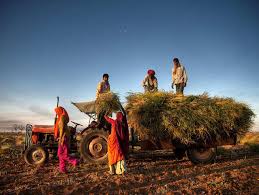
- 23 Nov 2024
In News:
India’s agricultural sector, which employs 42.3% of the population, is crucial to the nation’s economy. However, it faces a range of challenges that need to be addressed to ensure long-term stability, food security, and sustainable growth.
Current Performance of India’s Agricultural Sector
- Key Agricultural Metrics and Growth
- Foodgrain Production: India produced 330.5 million metric tonnes (MT) of foodgrains in 2022-23, maintaining its position as the world’s second-largest producer.
- Horticulture Production: A record high of 351.92 million tonnes in horticultural production was achieved, marking a 1.37% increase from the previous year.
- Market Outlook
- India’s agricultural market is projected to reach USD 24 billion by 2025.
- The food and grocery retail sector is ranked as the sixth-largest globally, with 70% of its sales generated from retail.
- Investment and Export Trends
- FDI in Agriculture: From April 2000 to March 2024, the agricultural services sector attracted USD 3.08 billion in foreign direct investment, while the food processing industry garnered USD 12.58 billion.
- Agricultural Exports: India’s agricultural and processed food exports reached USD 4.34 billion in 2024-25, including products like marine products, rice, and spices.
Key Challenges Confronting India’s Agriculture
- Climate Change and Environmental Impact:Extreme weather events, such as heatwaves and erratic rainfall, continue to impact agricultural productivity. In 2023, India experienced its second-warmest year on record, contributing to crop damage and rising food prices.
- Water Stress and Irrigation Inefficiency: Agriculture consumes the majority of India’s water resources, but irrigation efficiency is still low. The country relies heavily on flood irrigation, which leads to significant water wastage. Only 11% of agricultural land is under micro-irrigation, far below global standards.
- Land Fragmentation and Declining Farm Sizes: The average size of agricultural farms has decreased from 1.08 hectares in 2016-17 to 0.74 hectares in 2021-22, hindering the adoption of modern farming practices and mechanization.
- Market Access and Price Realization: Farmers continue to face challenges in accessing fair market prices due to the dominance of intermediaries and inadequate market infrastructure. Despite reforms like e-NAM, price gaps between farm-gate and retail prices persist, leaving farmers with a smaller share of the final price.
- Technology Adoption and Digital Divide: Although agritech is growing in India, only 30% of farmers use digital tools in agriculture, and rural digital literacy is just 25%, which limits the widespread adoption of modern farming solutions.
Addressing Structural Issues in Indian Agriculture
- Soil Health and Sustainability:The excessive use of chemical fertilizers and mono-cropping practices has led to soil degradation. Approximately 30% of agricultural land in India is experiencing degradation, impacting productivity and sustainability. Stubble burning further exacerbates this issue, worsening air quality and soil health.
- Crop Diversification Challenges:Many farmers are locked into the wheat-rice cycle due to Minimum Support Price (MSP) guarantees, limiting the cultivation of other crops like pulses and oilseeds. Although India is the largest producer of pulses, the domestic production is insufficient to meet the growing demand.
- Feminisation of Agriculture:Women make up 63% of agricultural workers but own only 11-13% of the operational land, limiting their access to resources and decision-making power. This gender disparity hampers their economic security and limits their participation in agricultural development.
Conclusion
India’s agricultural sector holds immense potential but is facing significant structural challenges that must be addressed to ensure its long-term growth and sustainability. Urgent reforms are needed to address issues like climate vulnerability, inefficient irrigation, land fragmentation, and limited market access. Additionally, fostering technology adoption, improving infrastructure, and addressing gender disparities will be crucial for improving the sector's performance and securing India’s food security needs.
Janaagraha’s Report on Urban Local Bodies

- 22 Nov 2024
In News:
46% of councillors in urban local bodies are women, says a report by Janaagraha, a not-for-profit organisation working to strengthen systems of governance in India’s cities.
Overview: Gender Representation in Urban Local Bodies
- Women Councillors in India: Around 46% of councillors in urban local bodies (ULBs) are women, according to a recent report by Janaagraha, a non-profit organization focused on strengthening urban governance systems.
- Capital Cities: In 19 out of 21 capital cities with active ULBs (such as Patna, Shimla, Ranchi, and Bhubaneswar), women councillors exceed 60% of the total councillor count.
Top States for Women Councillors
- Tamil Nadu stands out with the highest number of women councillors in the country, according to the "Roadmap for India’s City Systems Reforms" report by Janaagraha.
- Other States in the Top 10:
- Rajasthan, Madhya Pradesh, Maharashtra, Andhra Pradesh, Karnataka, Uttar Pradesh, Kerala, Bihar, and Chhattisgarh.
Women’s Reservation and Empowerment
- 50% Reservation: 17 states have legislated 50% women’s reservation in urban local bodies, surpassing the constitutional minimum of 33%.
Pathways for Urban Transformation
- Three Key Recommendations:
- Place-Based Governance: Advocates for governance focused on regional economies and local governments rather than sector-driven policies.
- Decentralised Participatory Governance: Emphasizes the need to strengthen urban local governments and increase citizen participation through the 74th constitutional amendment.
- Building State Capacities: Calls for a more effective role of the Ministry of Housing and Urban Affairs and state urban departments focused on local self-government.
Rural-Urban Transition and Policy Reforms
- Urbanization of Villages: The report highlights that about 1,000 villages have already transitioned into urban areas since the 2011 Census, urging the need for a rural-urban transition policy.
- Reimagine Urban Ministries: Recommends restructuring urban ministries to focus on regional economies and the strengthening of local governance institutions.
Key Challenges in Urban Governance
- Delays in Elections: 61% of ULGs in 15 states have delayed council elections.
- Disempowered Local Bodies: Mayors and ULGs often lack autonomy, with control over only four out of 18 functions.
- Citizen Participation Gaps: There is a lack of formal platforms for citizen involvement in governance.
Skilling and Capacity Building
- Certification-Based Training: Proposes skilling programs for ULG staff, with a focus on improving municipal efficiency and project implementation.
- Shared Service Centres: Recommends creating municipal service centres to benefit smaller cities and enhance urban management.
Conclusion: Need for Place-Based Governance
- Strategic Shift: Srikanth Viswanathan, CEO of Janaagraha, emphasized the need to shift away from a sector-based governance model to a place-based governance approach, better suited to the urban challenges of modern India.
Sustainable Path to Net-Zero for India
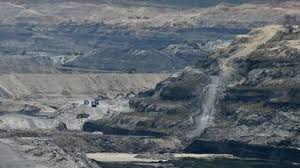
- 19 Nov 2024
In News:
India's commitment to achieving net-zero carbon emissions by 2070 presents a significant challenge, with only 45 years remaining to reach this ambitious target. The path to net-zero requires a balancing act between economic development, energy security, and climate adaptation. India’s efforts to meet its climate goals will be shaped by multiple factors, including resource constraints, land use, and financial limitations.
Why Net-Zero at All?
- Scientific Consensus on Climate Change
- Climate change is a growing concern, with the global temperature rise already reaching 1.1°C above pre-industrial levels.
- To avoid catastrophic impacts, the world needs to limit the temperature rise to 1.5°C. The remaining global carbon budget for this target is around 400-500 billion tonnes of CO?.
- Necessity of Sharp Emission Reductions
- Countries must drastically reduce emissions to stay within the carbon budget. Achieving net-zero emissions is essential for maintaining global climate stability.
Equity in Net-Zero Transitions
- Developed vs. Developing Countries
- Developed nations, historically responsible for a large share of emissions, are expected to lead the transition. However, they have not met the financial and technological support commitments for developing countries.
- Developing nations like India, with low per capita emissions, are under pressure to balance climate action with economic development.
- Climate Justice
- India’s per capita emissions are among the lowest globally, but the richest 10% of Indians contribute significantly to national emissions, exacerbating inequality.
- The impacts of climate change disproportionately affect the economically weaker sections, making the transition to net-zero not only an environmental challenge but a social justice issue as well.
The Challenge of Balancing Development and Sustainability
- Limits of India’s Resources
- India faces resource constraints, including land, water, and biodiversity, which limit the feasible expansion of renewable energy capacity.
- Meeting energy demands while ensuring food security, forest cover, and biodiversity preservation becomes increasingly challenging as energy requirements rise.
- Sustainable Consumption vs. Aspirational Lifestyles
- India’s aspiration to emulate the developed world’s lifestyle is unsustainable due to limited resources, which could lead to severe consequences like groundwater depletion, heat stress, and biodiversity loss.
- The focus should be on sufficiency consumption corridors, ensuring that consumption meets developmental goals without exceeding sustainable limits.
Projected Power Demand and Renewable Energy Targets
- Rising Power Demand
- India’s power demand could increase nine to ten-fold by 2070. Meeting this demand entirely via renewable energy requires significant expansion in energy generation capacity:
- 5,500 GW of solar energy
- 1,500 GW of wind energy
- India’s power demand could increase nine to ten-fold by 2070. Meeting this demand entirely via renewable energy requires significant expansion in energy generation capacity:
- Land Use Constraints
- To meet these targets, India must address land-use trade-offs. Expanding beyond 3,500 GW of solar and 900 GW of wind would require significant compromises in land availability for other uses, including agriculture and conservation.
Strategic Pathways to Net-Zero: Demand and Supply Measures
- Demand-Side Measures
- Energy-efficient construction: Use of better materials and passive designs to reduce cooling energy demand.
- Urban transport: Shift to public and non-motorized transport to reduce energy consumption in cities.
- Dietary choices: Promoting sustainable dietary practices to reduce the carbon footprint of food systems.
- Electrification: Focus on alternative fuels and energy-efficient appliances.
- Supply-Side Measures
- Decentralization of Energy Production: Expanding rooftop solar panels and solar pumps for agriculture.
- Nuclear Power Expansion: Increase nuclear energy to provide a low-carbon baseload and complement renewable sources like solar and wind, which are intermittent.
The Role of International Cooperation and Financial Support
- Global Cooperation
- Global climate action requires alignment between national interests, which may not always coincide, as seen in the context of the U.S. presidential election potentially influencing global climate policy.
- India’s path to net-zero depends heavily on international climate financing, technology transfer, and collaborative efforts to address climate justice.
- Equitable Financing for Developing Countries
- Developed countries are expected to provide financial support to developing nations like India to achieve climate goals. However, this support has been insufficient to date.
Conclusion: India’s Balancing Act
India faces a challenging balancing act as it seeks to provide quality of life for its growing population while achieving its climate adaptation and mitigation goals. The path to net-zero will require careful management of economic growth, energy production, and resource conservation. India must focus on demand-side strategies to reduce energy consumption and increase efficiency while expanding renewable energy infrastructure in a sustainable manner. Additionally, international cooperation and financial support will be crucial in ensuring that India’s transition to net-zero is equitable, efficient, and aligned with its developmental priorities.
Net Borrowing Ceiling
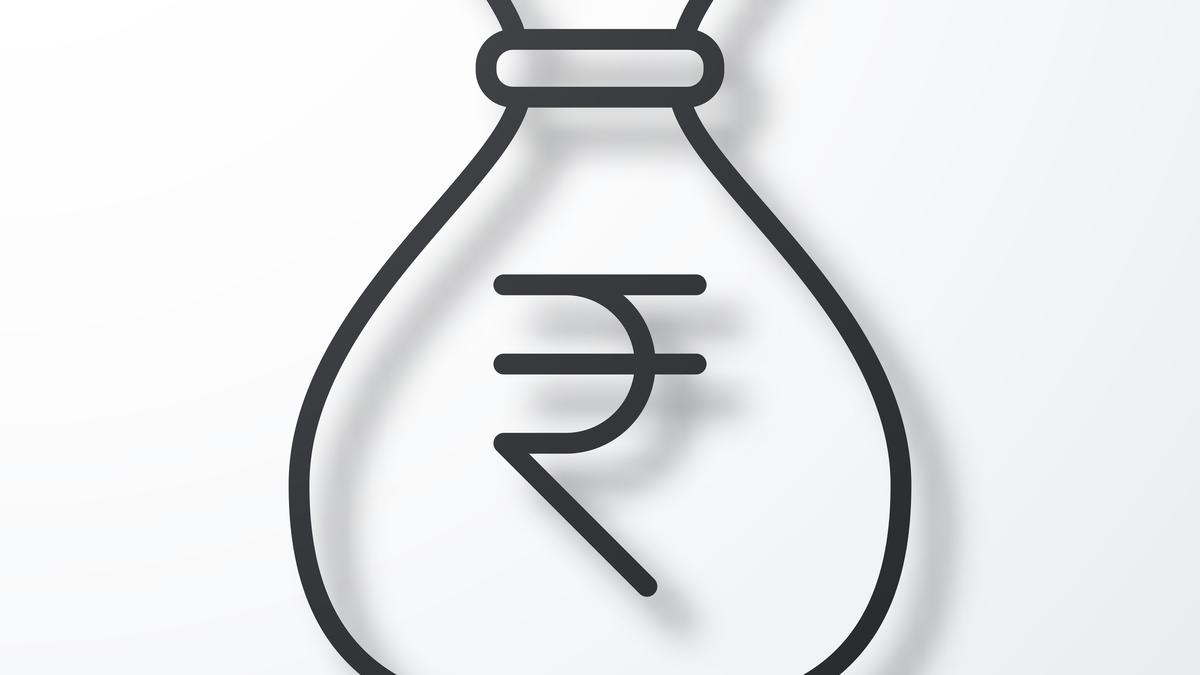
- 16 Nov 2024
In News:
- In 2023, the central government imposed a Net Borrowing Ceiling (NBC) on Kerala, limiting its borrowing capacity to 3% of the projected Gross State Domestic Product (GSDP) for the fiscal year 2023-24.
- Impact on Kerala’s Finances: This ceiling has significantly impacted Kerala’s ability to meet its expenditure needs and fund developmental activities, triggering political and legal disputes. Kerala has approached the Supreme Court of India, arguing that the imposition of NBC infringes upon its constitutional rights under Article 293 of the Indian Constitution.
Constitutional Provisions on Borrowing Powers
Article 292: Borrowing Powers of the Centre
- Central Government’s Borrowing: Article 292 grants the Central Government the authority to borrow money on the security of the Consolidated Fund of India.
- Limits on Borrowing: The extent of borrowing by the Centre is determined by laws enacted by Parliament.
Article 293: Borrowing Powers of the States
- State Borrowing: Article 293 allows State Governments to borrow within India against the Consolidated Fund of the State. However, it imposes certain conditions:
- If a State has outstanding loans or guarantees given by the Centre, the Centre’s consent is required to raise further loans.
- The Central government can impose conditions when granting such consent.
Centre’s Role in State Borrowing
- Article 293(3) allows the Centre to impose conditions on a state’s borrowing if it has existing liabilities or guarantees outstanding.
- The Centre has wide discretion in granting or denying consent, which has been a point of contention in Kerala’s case.
The Imposition of Net Borrowing Ceiling (NBC)
Scope of the NBC
- Comprehensive Coverage: The NBC encompasses all borrowing avenues, including open market loans, loans from financial institutions, and liabilities from State public accounts. To curb circumventing of the borrowing cap via State-owned enterprises, the NBC also covers borrowings by these entities.
Purpose of NBC
- Fiscal Discipline: The NBC is designed to regulate borrowing and prevent states from accumulating unsustainable levels of debt, thus ensuring financial stability.
- Transparency: By including all borrowing avenues, including off-budget borrowings by state-owned enterprises, the NBC aims to provide a clearer picture of a state’s financial health.
Arguments for the NBC
- Macroeconomic Stability: The NBC helps maintain macroeconomic stability by controlling the borrowing levels of states, thus protecting the national economy.
- Compliance with FRBM Act: The NBC aligns with the Fiscal Responsibility and Budget Management (FRBM) Act, aiming to keep the fiscal deficit within prescribed limits.
- Equitable Resource Distribution: The NBC ensures that wealthier states do not disproportionately borrow, thus promoting balanced regional development.
Arguments Against the NBC
- Erosion of Fiscal Autonomy: Critics argue that the NBC undermines the fiscal autonomy of states, as guaranteed by Article 293, by restricting their ability to make independent financial decisions.
- Impact on Developmental Activities: States, particularly Kerala, contend that the borrowing cap restricts their ability to fund key infrastructure projects and social welfare activities.
- Legal Concerns: The NBC’s impact on the interpretation of Article 293 raises legal questions regarding the extent of the Centre’s authority over state borrowing powers.
Fiscal Responsibility and Budget Management (FRBM) Act
Overview of the FRBM Act
- Objective: The FRBM Act, 2003 was enacted to promote fiscal discipline and ensure long-term financial stability in India.
- Key Features:
- Targets a 3% fiscal deficit of GDP for the Centre.
- Requires states to enact similar laws to control their fiscal deficit.
Amendments to FRBM Act
- 2018 Amendment: The FRBM Amendment Act required the central government to ensure that the fiscal deficit did not exceed 3% of GDP and total public debt remained under 60% of GDP.
- Fiscal Deficit Reduction: By 2025-26, the fiscal deficit is expected to be reduced to below 4.5% of GDP.
Way Forward: Strengthening Article 293
Guidelines for Borrowing Powers
- Transparency in Decision-Making: The Centre should ensure that the borrowing process is transparent, with clear standards and procedures for accepting or rejecting state borrowings.
- Consultative Process: The Centre should engage in consultations with states before imposing borrowing caps or conditions, fostering a cooperative federal structure.
- Equitable Treatment: Borrowing restrictions should apply uniformly to all states to avoid bias or favoritism.
Strengthening Fiscal Federalism
- Fiscal Autonomy: States should be given the flexibility to manage their finances in a way that reflects their unique economic needs and challenges.
- Periodic Reviews: The Net Borrowing Ceiling should be reviewed periodically to account for changing economic conditions and developmental priorities.
Chief Justice of India
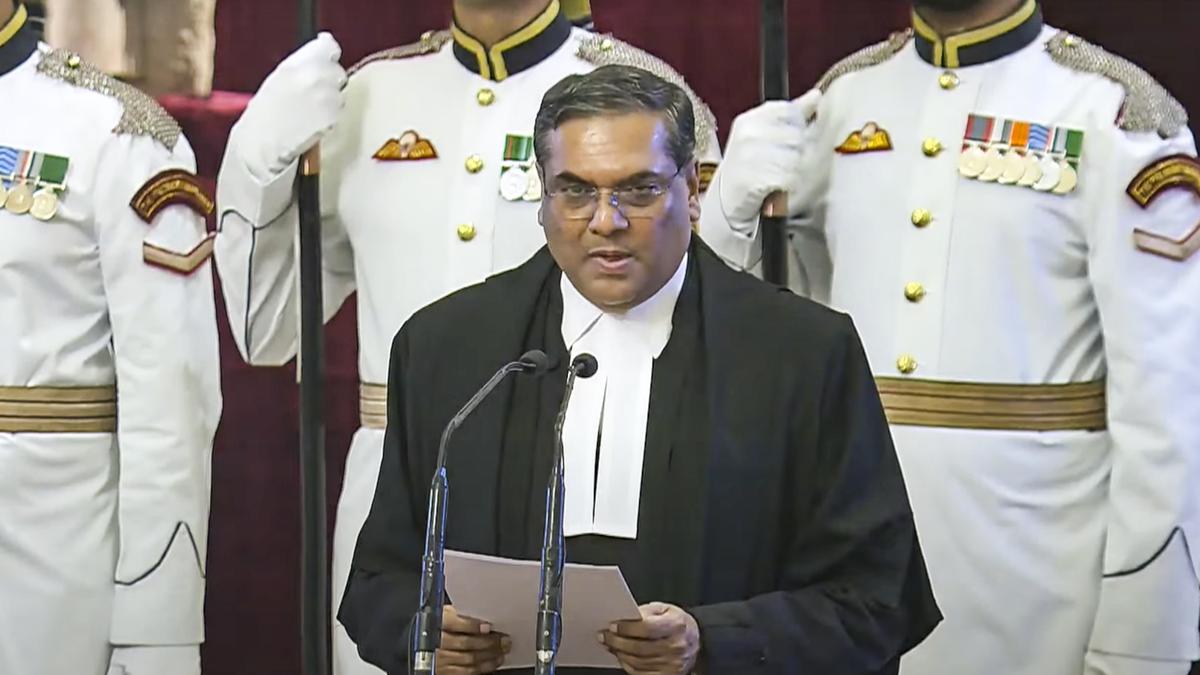
- 13 Nov 2024
In News:
On November 11, 2024, Justice Sanjiv Khanna was sworn in as the 51st Chief Justice of India (CJI) at the Rashtrapati Bhavan, New Delhi, marking a significant milestone in the Indian judiciary. He succeeds Justice D.Y. Chandrachud, who retired on November 10, 2024. Justice Khanna's term as CJI will last until May 13, 2025.
Background of Justice Sanjiv Khanna
Early Life and Legal Career
- Legal Practice: Justice Khanna began his legal career in 1983 after completing his law degree from Delhi University. He practiced in the District Courts of Delhi and handled cases in constitutional law, taxation, arbitration, and environmental law.
- Career in Delhi High Court: He was appointed as an Additional Judge to the Delhi High Court in 2005 and became a Permanent Judge in 2006.
- Appointment to the Supreme Court: Justice Khanna was appointed as a Supreme Court Judge in January 2019, without having served as a Chief Justice of a State High Court, and superseding 32 senior High Court judges.
Key Judicial Rulings of Justice Sanjiv Khanna
Major Constitutional Bench Decisions
- Abrogation of Article 370: Justice Khanna was part of the Bench that upheld the abrogation of Article 370 of the Constitution, which revoked Jammu and Kashmir’s special status.
- Electoral Bonds Scheme: He also contributed to the ruling that struck down the 2018 Electoral Bonds scheme, raising questions about the transparency of political funding.
Support for EVMs
- Justice Khanna defended the use of Electronic Voting Machines (EVMs) and rejected calls to revert to paper ballots, emphasizing the need for technological progress and institutional trust.
Personal Liberty and Bail Decisions
- Arvind Kejriwal’s Interim Bail: Justice Khanna granted interim bail to Delhi Chief Minister Arvind Kejriwal in the liquor policy case, underscoring personal liberty as a fundamental right.
- Judicial Review of Bail Conditions: He also initiated discussions on setting standards for bail conditions in cases involving significant political figures.
Role of the Chief Justice of India (CJI)
Appointment Process
- Article 124(2): A Supreme Court judge is appointed by the President of India, with the senior-most judge of the Supreme Court traditionally becoming the CJI.
- Qualifications: The CJI must be a citizen of India and have served as a judge in a High Court for at least five years or as an advocate in a High Court for ten years.
Powers and Responsibilities
- Master of the Roster: The CJI is the "Master of the Roster," responsible for assigning cases to specific benches and determining the court's schedule.
- Collegium System: The CJI, along with four senior judges, forms the Collegium that recommends judicial appointments for the Supreme Court and High Courts.
- Ad-Hoc Appointments: The CJI can also appoint ad-hoc judges to the Supreme Court under Article 127 of the Constitution.
Removal
- A CJI can only be removed through a process initiated in Parliament, requiring a special majority in both Houses of Parliament.
Appointment of CJI in Other Countries
United States
- The Chief Justice of the United States serves for life, with tenure continuing until impeachment or voluntary retirement.
United Kingdom
- The Lord Chief Justice in the UK is appointed by a special panel from the Appeal Court or the Supreme Court. The tenure is life, but mandatory retirement is set at 75 years of age.
Conclusion
Justice Sanjiv Khanna’s appointment as the 51st Chief Justice of India represents a significant moment in the country's judicial history. With his extensive experience and legal acumen, he faces numerous challenges, from dealing with case pendency to navigating sensitive constitutional issues. His tenure will likely shape the future trajectory of the Indian judiciary, with a focus on upholding justice and personal liberty while addressing the evolving needs of a democratic society.
Indus Waters Treaty (IWT)
- 08 Nov 2024
In News:
Need for modification of the Indus Waters Treaty (IWT) amidst changing geopolitical, environmental, and demographic realities.
Background of the Indus Waters Treaty (IWT)
- About IWT:
- Signed in 1960 between India and Pakistan, brokered by the World Bank.
- Governs the sharing of the Indus River system waters.
- Historical Context:
- Origin in the Inter-Dominion Accord of 1948 post-partition.
- Finalized after negotiations facilitated by the World Bank in 1951.
- Key Provisions:
- Eastern Rivers (Ravi, Beas, Sutlej) allocated to India.
- Western Rivers (Indus, Jhelum, Chenab) allocated to Pakistan, with limited use allowed for India (e.g., hydropower, irrigation).
- Establishment of the Permanent Indus Commission (PIC) for cooperation and dispute resolution.
India’s Perspective
- Rationale for Modification:
- Increased demographic and agricultural demands.
- Need for sustainable water management.
- Acceleration of hydropower projects on western rivers permitted by the treaty.
- Security Concerns: Cross-border terrorism impacting trust in treaty operations.
Pakistan’s Concerns
- Dependence on Indus System: Critical for agriculture and drinking water as the lower riparian state.
- Potential Impacts of Modification:
- Fear of reduced water availability.
- Concerns over India’s hydropower projects altering water flow.
Current Challenges
- Hydropower Projects: Disputes over compliance with treaty provisions regarding hydropower construction.
- Technical Disputes: Divergent interpretations of treaty terms.
- Political Tensions: Strained bilateral relations with minimal diplomatic engagement.
- Climate Change Impacts: Altered precipitation patterns and glacial melt affecting water availability.
Arguments for Modifying the Treaty
- Addressing Contemporary Challenges: Climate change, technological advancements, and increased water demand.
- Securing National Interests:
- Clarifications on hydropower construction.
- Improved dispute resolution mechanisms.
Risks of Modifying the Treaty
- Escalation of Tensions: Perceived unilateral actions by Pakistan.
- Political Sensitivities: Domestic opposition in both countries.
Way Forward: A Balanced Approach
- Engagement and Dialogue: Bilateral discussions with potential third-party mediation (e.g., World Bank).
- Cooperation over Conflict: Recognizing mutual benefits of collaboration in water management.
- Adaptation Measures: Incorporate provisions addressing climate change and technological advances.
Zeroing in on Methane Diplomacy, at COP29
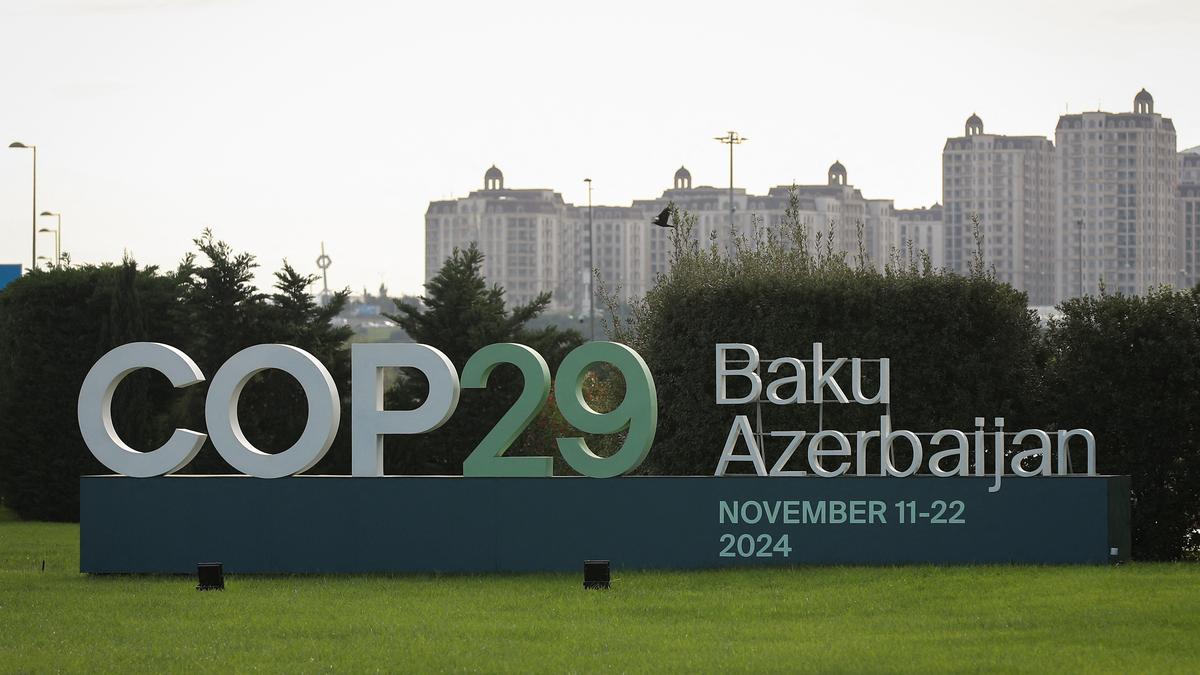
- 07 Nov 2024
In News:
From November 11 to 22, 2024, global leaders will gather in Baku, Azerbaijan, for the 29th Conference of Parties (COP29) under the United Nations Framework Convention on Climate Change (UNFCCC). This year’s summit, known as the Finance COP, will focus on setting a new global climate finance target—the New Collective Quantified Goal (NCQG).
A key focus of the summit is the reduction of methane emissions, as countries aim to curb near-term temperature increases, which buys critical time for long-term CO2 reductions necessary for stabilizing climate change.
U.S.-China Collaboration and Methane Reduction
US-China Collaboration Despite Geopolitical Tensions
Despite ongoing geopolitical tensions, the United States and China have found common ground on the issue of methane reduction. Both nations recognize the importance of addressing methane emissions, which are more potent in the short term than CO2. They, along with the United Arab Emirates, organized a summit at COP28 to discuss methane and other non-CO2 pollutants.
China’s National Plan for Methane Emissions
In November 2023, China launched its first national methane reduction plan, emphasizing capacity-building efforts over explicit reduction targets. This plan marked a significant step in China’s climate policy, underscoring its commitment to mitigating methane emissions alongside the U.S.
Given that China and the U.S. are the two largest contributors to methane emissions globally, their collaboration presents a significant opportunity for global climate mitigation efforts. India, the third-largest emitter of methane, could benefit from this partnership by seeking financial support and technical expertise to address its methane challenges.
India’s Methane Emissions Profile and Challenges
Emissions Breakdown
India’s Third Biennial Update Report to the UNFCCC indicates that in 2016, India emitted approximately 409 million tons of CO2-equivalent methane. The major sources of these emissions include:
- Agriculture: 74% (mainly from livestock and rice cultivation)
- Waste: 14% (unmanaged organic waste in landfills and dumpsites)
- Energy: 11%
- Industrial processes: 1%
Due to the dominant role of agriculture, India has been cautious about committing to stringent methane reduction targets. Initiatives like the Global Methane Pledge, which calls for a 30% reduction from 2020 levels by 2030, have not been fully embraced.
Environmental and Health Impact of Methane Emissions
Methane-related fires at waste dumpsites, such as the Bhalswa dump in Delhi (2022), have highlighted the broader environmental and health risks of methane emissions. These fires contribute significantly to air pollution, making it urgent for India to address methane in its waste management and agricultural sectors.
India’s Initiatives for Methane Reduction
Waste Management Programs
- Comprehensive Waste Management Framework India’s waste management sector is a significant source of methane, contributing 14% of the nation’s total emissions. Although a comprehensive regulatory framework for waste management has been developed, implementation remains slow due to local capacity constraints and financial limitations.
- Innovative Solutions Indore, a city in Madhya Pradesh, has pioneered waste sorting and biomethane production. The city's initiative includes:
- Sorting organic waste
- Converting it into biogas to fuel city buses
This model has gained national attention and is being considered for replication in other cities.
- GOBARdhan Scheme Launched as part of the Swachh Bharat Mission-Urban 2.0, the Galvanizing Organic Bio-Agro Resources Dhan (GOBARdhan) scheme encourages rural communities to convert cattle manure and other organic waste into biogas and compost, reducing methane emissions from livestock waste while providing additional income to rural households.
Agricultural and Livestock Emission Reduction
- National Mission for Sustainable Agriculture (NMSA) The NMSA promotes climate-resilient agricultural practices that reduce methane emissions. For example, Alternate Wetting and Drying (AWD) is a water-saving technique used in rice farming that reduces methane emissions by limiting anaerobic decomposition.
- National Livestock Mission Under the National Livestock Mission, practices such as improved fodder management, silage making, and Total Mixed Ration (TMR) feeding are being promoted. These practices reduce methane emissions from livestock by improving digestion and feed efficiency.
Opportunities for India at COP29
Leveraging U.S.-China Methane Partnership
COP29 offers India an opportunity to leverage the U.S.-China collaboration on methane reduction. By engaging with these two major emitters, India can seek:
- Financial support
- Technical assistance
- Capacity-building resources, particularly for its waste sector, which is a significant source of methane emissions.
Accurate data on methane emissions, such as satellite-based monitoring, can help India refine its emission inventories and enhance the effectiveness of its methane mitigation efforts.
Fast-Tracking India’s Methane Reduction Efforts
Although methane is not the primary focus at COP29, India has an opportunity to fast-track its efforts in methane reduction. The country's existing policies and initiatives, such as waste management programs and agricultural missions, provide a foundation upon which international collaboration can build.
Recent data from satellite monitoring in cities like Delhi and Mumbai shows that actual methane emissions from waste dumpsites may be 50%-100% higher than previously estimated, highlighting the urgency of addressing this issue.
Conclusion
Although methane may not dominate the COP29 agenda, it represents a critical pathway for India to accelerate its climate action. With the groundwork already laid through domestic policies and innovative solutions, India now requires enhanced financial and technical backing to scale up its methane reduction initiatives. By engaging proactively at COP29, India has a unique opportunity to secure the resources needed to tackle methane emissions, benefiting both its citizens and the global fight against climate change.
Supreme Court Ruling on Property and Redistribution

- 06 Nov 2024
In News:
A crucial 9-judge bench of the Supreme Court ruled on the scope of government powers over private property, with a focus on Articles 39(b) and 31C of the Constitution.
Key Issues Considered by the Court
- Article 31C: Whether it still protects laws giving effect to Articles 39(b) and 39(c), even after amendments and past rulings.
- Interpretation of Article 39(b): The meaning of “material resources of the community” and the limits on government acquisition.
Legal and Constitutional Background
- Article 31C and 39(b) Overview:
- Article 31C was introduced by the 25th Amendment (1971) to protect laws related to the distribution of resources for the common good.
- Article 39(b) (Directive Principle of State Policy) mandates that resources should be distributed to best serve the common good.
- Historical Context:
- Kesavananda Bharati Case (1973): The Supreme Court affirmed the Constitution’s "basic structure," impacting the interpretation of amendments to Article 31C.
- Minerva Mills Case (1980): The Court struck down further amendments to Article 31C.
The Supreme Court’s Ruling in 2024
- Restoration of the Post-Kesavananda Position: The Supreme Court clarified that the interpretation of Article 31C is restricted, and the protection under this article applies only to laws implementing Articles 39(b) and 39(c), not all directive principles.
- On Redistributing Private Property:
- The majority opinion held that not all privately owned properties can be considered “material resources of the community” for redistribution under Article 39(b).
- The Court dismissed the broad interpretation of "material resources" used in previous rulings (e.g., Justice Krishna Iyer’s dissent in the Ranganatha Reddy case, 1977).
Dissenting and Concurring Opinions
- Justice Nagarathna’s Concurring Opinion:
- Acknowledged that certain privately owned resources could be considered material resources (e.g., forests, wetlands), but emphasized a balanced approach.
- Distinguished between personal belongings and resources that could be considered part of the public domain.
- Justice Dhulia’s Dissent:
- Argued for a broader interpretation, in line with past rulings, that private resources could be considered material resources if they served the public good.
Interpretation of Article 39(b)
- Scope of the Article:
- Article 39(b) directs the State to ensure that the ownership of material resources is distributed to serve the common good.
- It imposes a positive obligation on the State to create policies for resource distribution, but does not authorize arbitrary expropriation of private property.
- Private Property as Material Resources:
- The Court clarified that private property cannot be deemed a material resource of the community unless specific conditions are met (e.g., scarcity, public welfare implications).
- The judgment emphasized a case-by-case analysis rather than a blanket approach.
Criteria for Assessing Material Resources
The Court provided criteria to evaluate whether a private property could be considered a “material resource of the community”:
- Nature of the Resource: What is the resource’s fundamental characteristic?
- Impact on Public Welfare: Does the resource impact the common good or public interest?
- Ownership Type: Is the resource privately owned or under state control?
- Scarcity: Is the resource scarce or in finite supply?
- Concentration of Ownership: Are the resources concentrated in the hands of a few private entities?
Implications of the Ruling
- Protection of Private Property Rights: The ruling strengthens protections against arbitrary State acquisition of private property, reinforcing the constitutional safeguards for property rights.
- Economic Implications: The Court noted that India’s economic trajectory has shifted from socialism to a market-based economy, and that resource redistribution policies should reflect this change.
- Policy Shifts: The ruling marks a shift away from a socialist economic ideology towards one that emphasizes private property rights, while still considering public welfare in resource distribution.
Conclusion
- Balancing Individual Rights with Public Welfare: The ruling underscores the importance of balancing private property rights with the need for equitable resource distribution to serve the common good.
- Implications for Constitutional Interpretation: This judgment marks a pivotal moment in the interpretation of property rights in India, affirming the evolving nature of the Constitution in response to dynamic economic and social policies.
Does Data Justify Subdivision of Quotas?
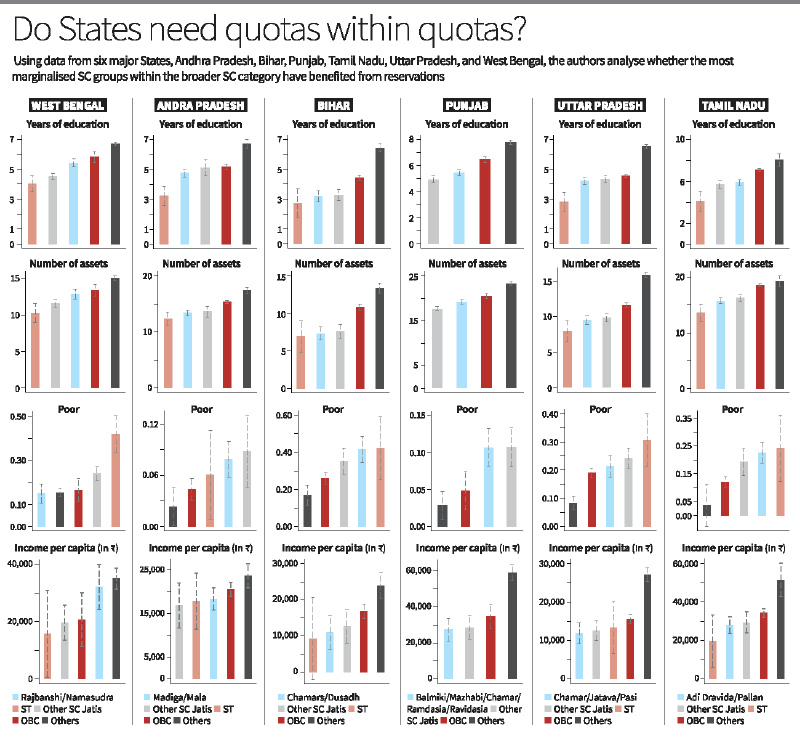
- 05 Nov 2024
Context
India's reservation system has long been a tool for uplifting historically marginalized communities, especially Scheduled Castes (SCs) and Scheduled Tribes (STs). However, recent debates have questioned whether the system serves its intended purpose, particularly in light of disparities within the SC groups. The need for a ‘quota-within-quota’ system has been raised to ensure more equitable outcomes across different SC subgroups.
The Reservation System: Origins and Objectives
Purpose of Reservations
- Historical Background: Established to correct centuries of social and economic exclusion faced by SCs and STs.
- Mechanism for Equality: Aimed to create opportunities in education, government employment, and public offices for historically marginalized groups.
- Dr. B.R. Ambedkar’s Vision: Reservations were designed to transition from formal legal equality to substantive equality.
Challenges of the Current System
- Despite progress, certain SC subgroups seem to have benefited more than others.
- A Supreme Court ruling has led to calls for a 'quota-within-quota' to address intra-SC disparities.
Exploring Intra-SC Disparities: The Data Analysis
States Examined
- Key States: Andhra Pradesh, Bihar, Punjab, Tamil Nadu, Uttar Pradesh, and West Bengal.
- Objective: To investigate whether some SC subgroups have disproportionately benefited from the reservation system.
Findings Across States
- Andhra Pradesh: Minor differences between SC groups (Malas vs. Madigas), with both groups showing similar socio-economic progress.
- Tamil Nadu: No significant disparity between Adi Dravida and Pallan groups, both benefiting equally from reservations.
- Punjab: Subdivision of quotas since 1975 has led to better outcomes for disadvantaged groups like Mazhabi Sikhs and Balmikis.
- Bihar: The Mahadalit category, introduced in 2007, failed due to political intervention, undermining the policy’s goals.
Key Insights
- In some states (e.g., Punjab), a subdivision of quotas has been effective in addressing intra-SC disparities.
- In other states, like Andhra Pradesh and Tamil Nadu, the benefits of reservations are already distributed fairly evenly among SC subgroups.
- The gap between SCs and upper-caste groups remains much larger than the gap within SCs.
The Issue of Access to Reservations
Caste Certificates as a Proxy for Access
- Data from IHDS: Less than 50% of SC households in Uttar Pradesh and Bihar report having caste certificates, limiting access to reserved positions.
- Better Access in Some States: Over 60-70% of SC households in Tamil Nadu and Andhra Pradesh have caste certificates.
Core Issue: Ensuring Access
- Access Challenges: Without proper access to caste certificates, many SCs are excluded from the benefits of the reservation system.
- Priority Area: Ensuring that all eligible SCs have access to reservations is a critical concern before considering subdivision.
The 'Quota-within-Quota' Proposal
Concept and Potential Benefits
- Targeted Assistance: A ‘quota-within-quota’ would provide more focused help to the most disadvantaged SC subgroups, as seen in Punjab.
- Political Considerations: However, the political motivations behind quota subdivision, as seen in Bihar, can undermine the policy’s effectiveness.
Criticism and Limitations
- Uneven Need for Subdivision: In many states, the need for further subdivision is minimal, as the benefits of reservations are already fairly distributed.
- Political Exploitation: The policy risks becoming a political tool rather than a genuine means of achieving social justice, as political influence often determines who is categorized as the most disadvantaged.
Addressing Inequality Beyond Reservations
Income-Based Criteria and Monetary Benefits
- Current Approach: Monetary benefits (e.g., scholarships, lower fees) are a part of the affirmative action system.
- Income Criterion: Should be used to determine eligibility for monetary benefits to focus assistance on those most in need.
The "Creamy Layer" Debate
- Supreme Court’s Suggestion: The introduction of a "creamy layer" exclusion for SCs, akin to the Other Backward Classes (OBCs) model, remains contentious and requires stronger evidence.
Challenges of Economic Mobility
- Stigma and Discrimination: Economic progress does not necessarily eliminate social stigma or discrimination, especially for historically marginalized groups.
- Long-Term Goal: While reservations have contributed to creating a Dalit middle class, addressing stigma will require a gradual process.
The Need for Updated Data and Evidence-Based Policy
Data Deficiency
- Lack of Comprehensive Data: The absence of updated, reliable data on caste-based disparities limits the effectiveness of any policy reform.
- National Census Delay: India’s national Census, the only source of comprehensive data on caste, has been delayed, exacerbating the problem.
Evidence-Driven Reform
- Importance of Data: Robust and up-to-date data is essential to assess the true impact of reservations and to make informed policy decisions.
Conclusion: Reforming the Reservation System
- Reservations’ Success: The reservation system has played a significant role in improving the socio-economic status of SCs and STs.
- Intra-SC Disparities: While some subgroups benefit more than others, the broader gap between SCs and upper-caste groups remains far more pronounced.
- Focus on Access: The primary focus should be on improving access to reservations, ensuring that all eligible SCs benefit fully from affirmative action.
Key Takeaways from COP-16: Convention on Biological Diversity

- 03 Nov 2024
In News:
The 16th edition of the Convention of Biological Diversity (CBD) in Cali, Colombia was concluded.
Key Agreements at COP-16
- Establishment of the Cali Fund
- Purpose: To ensure equitable benefit-sharing from the use of Digital Sequence Information (DSI) on genetic resources.
- Focus on Indigenous Communities: At least 50% of the Cali Fund will support Indigenous peoples and local communities, with special emphasis on women and youth.
- Creation of a Permanent Subsidiary Body
- Inclusion of Indigenous Peoples: A new body will ensure the active participation of Indigenous groups in biodiversity conservation and policy discussions.
- Resource Mobilisation Strategy
- Target Funding: The conference agreed on a strategy to secure USD 200 billion annually by 2030 to support global biodiversity initiatives.
- Kunming Biodiversity Fund: A contribution of USD 200 million from China to support biodiversity funding.
- Management of Invasive Alien Species
- New Guidelines: Proposals for databases, cross-border trade regulations, and enhanced coordination with e-commerce platforms to manage invasive species.
- Identification of Ecologically or Biologically Significant Marine Areas (EBSAs)
- Enhanced Process: COP-16 agreed on an evolved process for identifying EBSAs, a critical aspect of marine conservation.
- Global Action Plan on Biodiversity and Health
- One Health Approach: Approval of a global action plan to curb zoonotic diseases, promote health, and safeguard ecosystems.
India’s Contribution at COP-16
Updated National Biodiversity Strategy and Action Plan (NBSAP)
- Financial Commitment: India plans to invest ?81,664 crore (USD 9.8 billion) from 2025-30 on biodiversity conservation.
- Focus Areas: India highlighted efforts such as the establishment of the International Big Cat Alliance, expansion of Ramsar sites, and increased spending on biodiversity from 2018-2022.
International Finance Support
- Global Partnerships: India emphasized the need for international finance to meet biodiversity targets, particularly under the Kunming-Montreal Global Biodiversity Framework (KMGBF).
Key Outcomes from COP-16
- New Mechanisms for Biodiversity Conservation
- Cali Fund: Ensures equitable benefit-sharing from genetic resources.
- Permanent Subsidiary Body: Facilitates the inclusion of Indigenous peoples in policy-making.
- Funding and Resource Mobilization
- USD 200 Billion Annually: Strategy to secure funding for biodiversity initiatives.
- Redirecting Harmful Subsidies: Agreement to redirect USD 500 billion in harmful subsidies by 2030.
- Biodiversity and Human Health
- Global Action Plan on Biodiversity and Health: Aimed at preventing zoonotic diseases and promoting human, animal, and environmental health.
Challenges in Biodiversity Protection
Key Threats to Biodiversity
- Population Growth and Resource Demand: Increasing population and demand for biological resources lead to over-exploitation.
- Habitat Degradation and Climate Change: Destruction of ecosystems and climate change threaten species globally.
- Invasive Species: Introduction of non-native species harms local biodiversity.
- Government Policies: Policies that prioritize development without environmental safeguards contribute to biodiversity loss.
Gaps in Global Biodiversity Framework
- Weak Legal Language: Concerns about insufficient legal protection for critical ecosystems.
- Lack of Implementation Mechanisms: Absence of mandatory review mechanisms for biodiversity targets.
Kunming-Montreal Global Biodiversity Framework (KMGBF)
Framework Overview
- Adoption: Adopted at COP-15 in 2022, the KMGBF sets 23 action-oriented targets for biodiversity by 2030.
- Key Goals: Includes restoring 30% of degraded ecosystems and reducing the risk of invasive species by 50%.
- Living in Harmony with Nature: The framework envisions achieving biodiversity targets and living sustainably with nature by 2050.
Way Forward: Moving from Agreements to Action
- Participation of Stakeholders - Inclusive Approach: Ensuring the involvement of all relevant stakeholders, including governments, businesses, and local communities, in biodiversity conservation.
- Integrated Resource Management - Ecosystem Approach: Promoting a holistic approach to managing biodiversity and natural resources.
- Strengthening Governance - Good Governance Practices: Encouraging better governance to prevent unregulated exploitation of natural resources.
- International Financial Support - Alignment with Financial Institutions: Aligning global financial institutions and multilateral development banks with biodiversity conservation goals.
Tackling Judicial Pendency and Adjournments in India

- 01 Nov 2024
In News:
The issue of judicial delays and adjournments has become a significant concern in India’s judicial system. President Droupadi Murmu, while addressing the National Conference of District Judiciary in September 2024, emphasized the need to eliminate the culture of adjournments. These delays particularly affect the poor and rural populations, who often suffer in silence, avoiding court due to the fear of protracted justice.
Background of the Indian Judicial System
India’s judicial system has evolved under various legal frameworks, including the Code of Civil Procedure (CPC) and the Criminal Procedure Code (CrPC). Initially, civil courts dealt with a wide range of cases, while criminal courts focused on criminal offenses. The establishment of the Supreme Court and High Courts further strengthened India’s judicial architecture to handle constitutional and appellate cases.
To address the growing caseload, the Indian government introduced the tribunal system through the 42nd Constitutional Amendment Act, 1976, aiming to manage specialized disputes. However, despite these reforms, case pendency continues to rise.
Key Issues Contributing to Judicial Delay and Pendency
- Judge-to-Population Ratio - India currently has 21 judges per million people, far below the recommended 50 judges per million as per the 120th Law Commission Report. The shortage of judges directly contributes to the growing backlog of cases.
- Vacant Judicial Positions - As of late 2024, 30% of High Court positions remain vacant, exacerbating the case pendency crisis. The delay in filling these vacancies has resulted in overburdened judges, further delaying case resolution.
- Legislative Overload - The enactment of laws without conducting prior judicial impact assessments leads to an increase in the number of cases, often without considering the capacity of the judiciary to handle them. This lack of foresight results in excessive pressure on courts.
- Overworked Judiciary - Judges often face a heavy workload, with some handling multiple responsibilities across different courts. This overburdening leads to mental fatigue, increased errors, and prolonged decision-making.
- Witness Delays - The absence of witnesses and delays in their appearance in court can significantly prolong the judicial process, contributing to case pendency.
Government Initiatives and Challenges
-
- National Judicial Infrastructure Plan (NJIP): The NJIP aims to modernize judicial infrastructure, improving court functioning and case processing. However, its full implementation across the country remains a work in progress.
- E-Courts Project: The E-Courts project aims to digitize the judicial process, including e-filing and virtual hearings. This initiative has shown promise in reducing procedural delays but still requires wider application.
- Tribunal System: While tribunals were introduced to reduce the burden on regular courts, their success has been limited, and the abolition of six tribunals in 2021 has added additional pressure on High Courts.
- Case Timeline Legislation: Laws prescribing time-bound adjudication for sensitive cases have been enacted, but due to inefficiencies in the system, deadlines are rarely met.
Recommendations for Reform
-
- Enhance Judicial Strength
-
- Increase the Judge-to-Population Ratio: The government should prioritize the appointment of judges to meet the 50 judges per milliontargets.
- Fill Vacant Positions: High Courts should fill vacant positions six months in advance to ensure a steady supply of judges.
-
- Judicial Impact Assessment
- Implement Judicial Impact Assessments: The Justice M. Jagannadha Rao Committee’s recommendation for judicial impact assessments should be made mandatory. Every new Bill should assess the likely increase in judicial workload, the required number of judges, and the necessary infrastructure.
- Promote Alternative Dispute Resolution (ADR)
-
- Encourage ADR Mechanisms: Mediation and arbitration should be promoted as cost-effective alternatives to court proceedings. Public awareness campaigns and legal reforms can encourage the use of ADR.
-
- Strengthen Infrastructure and Technology
- Modernize Court Infrastructure: The judiciary should invest in technology such as e-filing and virtual hearings to reduce administrative burdens and expedite case resolutions.
- Streamline Administrative Processes: Technology can also help automate administrative tasks, thereby reducing the workload on judges and speeding up case processing.
- Limit Adjournments
- Stricter Norms for Adjournments: Judicial bodies should enforce stricter norms for granting adjournments, ensuring that they are not used excessively.
- Oversight Mechanism: An independent body can monitor the frequency of adjournments and take corrective action if needed.
Conclusion
Addressing the issue of judicial adjournments and case pendency requires a comprehensive approach involving structural reforms, better resource allocation, and the adoption of technology. Strengthening the judiciary’s infrastructure, increasing judicial appointments, and promoting alternative dispute resolution are vital steps toward ensuring quicker, fairer justice. The collaborative efforts of the judiciary, government, and society at large are essential to ensuring that India’s judicial system can meet the demands of justice in a timely and efficient manner.
Analysis of Election Expenditure in India
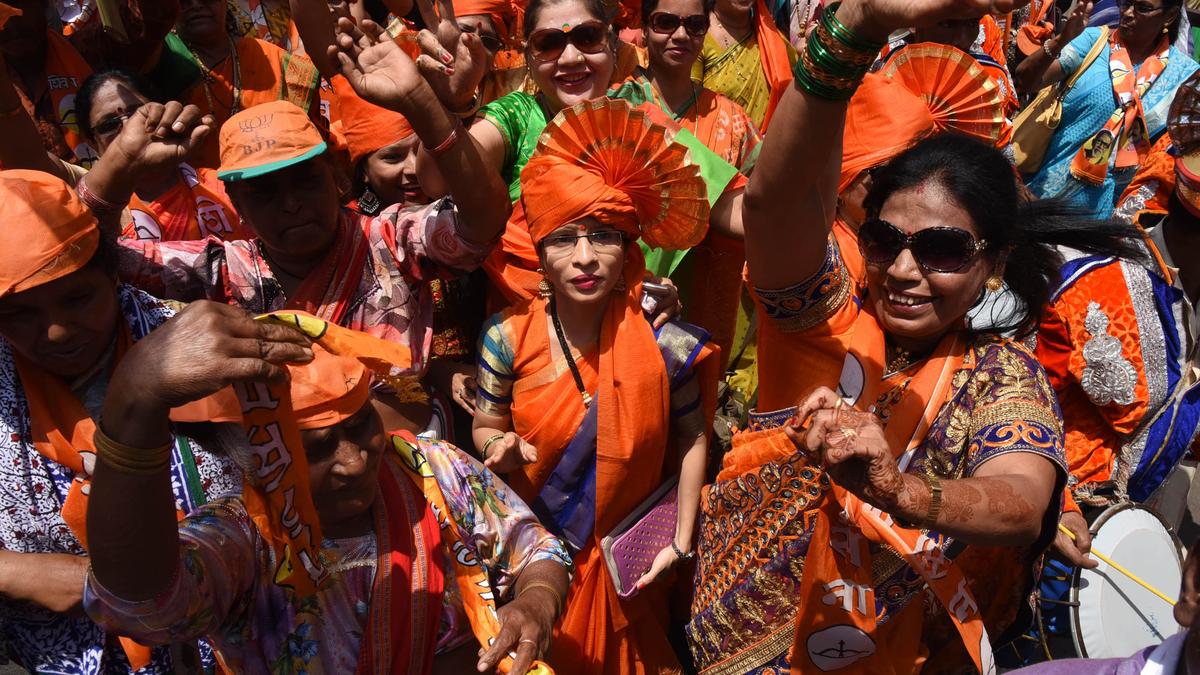
- 30 Oct 2024
Overview
Election expenditure has become a pressing issue in modern democracies, with growing concerns about its implications for political integrity and fair competition. In India, the skyrocketing costs of elections—both in terms of candidate spending and political party expenditure—pose significant challenges to electoral transparency, governance, and equity.
Current State of Election Expenditure in India
The total expenditure on elections in India has risen dramatically in recent years. For the 2024 Lok Sabha elections, the total expenditure by various political parties is estimated to reach around ?1,00,000 crores. This is a significant jump from the ?9,000 crores spent in the 1998 general elections. The expenditure per vote has also risen substantially, from ?25,000 in 1951 to ?1,400 in 2024.
The election expenditure limits for individual candidates are capped by the Election Commission of India (ECI):
- ?95 lakh for larger states (Lok Sabha constituencies)
- ?75 lakh for smaller states
- ?40 lakh for legislative assembly elections in larger states
- ?28 lakh for smaller states
However, these caps apply only to individual candidates. Political parties are not subject to any expenditure limits, allowing them to spend unlimited amounts during campaigns. This discrepancy leads to considerable financial disparities between well-funded national parties and regional or smaller parties, undermining the principle of equitable competition.
Global Comparisons: Election Financing and Spending Limits
Election financing varies widely across democracies, with countries like the United States and the United Kingdom adopting specific limits and regulations to curb excessive spending.
- United States: U.S. elections are financed largely through contributions from individuals, corporations, and Political Action Committees (PACs). Notably, Super PACs—which can raise and spend unlimited funds—have exacerbated concerns over money's influence on political outcomes. The 2024 U.S. presidential election is expected to cost around $16 billion (approximately ?1,36,000 crores).
- United Kingdom: Political parties are subject to strict expenditure limits. Each political party is allowed to spend £54,010 for each constituency, with an overall cap of £35 million for contests across all constituencies. This is aimed at ensuring that elections are not swayed by wealth alone and that smaller parties have a fighting chance.
Despite these measures, the United States still faces issues with unlimited corporate donations and the growing influence of wealthy donors, highlighting the complexities in curbing money in politics.
Challenges Posed by Rising Election Expenditure
The rising costs of elections present multiple challenges in India, exacerbating corruption, unfair competition, and political inequality.
a) Political Corruption and Influence
Large election expenditures are often funded by corporate donations and other private entities, creating a nexus between politicians and donors. This can lead to a quid-pro-quo relationship, where politicians may prioritize the interests of their donors over public welfare. This undermines public trust in the political system.
b) Unaccounted Money and Illegal Practices
A significant portion of the election expenditure is unaccounted for. The Centre for Media Studies (CMS) reports that in the 2019 general elections, around 25% of the total expenditure was spent on illegally distributing cash to voters. This practice, coupled with the absence of strict regulations on third-party campaigners, enables the use of black money in elections, further skewing the electoral process.
c) Uneven Playing Field
The absence of limits on party spending creates a situation where well-funded national parties have an inherent advantage over smaller regional parties and independent candidates. This financial inequality reduces the ability of under-funded candidates to compete based on ideas and merit rather than financial muscle. Furthermore, the growing influence of digital advertising and media campaigns has further widened this gap, with larger parties investing heavily in digital platforms like Google and Facebook, marginalizing those without the resources to do so.
Proposed Reforms to Address Election Expenditure Issues
To address these challenges, several reforms have been suggested by experts, committees, and the Election Commission. These reforms aim to curb excessive spending, ensure fairness, and increase accountability in the electoral process.
a) Capping Expenditure by Political Parties
There is a pressing need to introduce expenditure ceilings for political parties, in addition to those imposed on individual candidates. According to the 2016 Electoral Reforms Report by the Election Commission, political party spending should be capped at a level not exceeding the total expenditure limit for all candidates fielded by the party. This would level the playing field, ensuring that the influence of money is curtailed during elections.
b) State Funding of Elections
Recommendations for state funding of elections have been made by the Indrajit Gupta Committee (1998) and the Law Commission Report (1999). The state could partially finance the campaigns of recognized political parties, ensuring that candidates are not solely reliant on private donations. However, this reform faces challenges in terms of feasibility and implementation, especially regarding the mechanism for allocation of funds.
c) Regulation of Third-Party Campaigners
India should follow the example of countries like Australia, where third-party campaigners are formally registered and required to disclose their funding sources. This would help in tracking illegal contributions and ensure that election spending is transparent.
d) Ban on Government Advertisements During Election Periods
The use of government advertisements by the ruling party during the run-up to elections often leads to an uneven playing field. A ban on government-funded ads during the six months before elections would ensure that the ruling party does not gain an unfair advantage through public resources.
e) Strengthening Electoral Oversight
An independent electoral oversight body could be established to oversee campaign financing and ensure that all parties comply with spending limits. This would include measures to audit party finances, track donations, and verify spending claims, making it more difficult for parties to evade rules or use black money.
Conclusion: The Need for Comprehensive Electoral Reforms
The rising costs of elections in India present significant challenges to the democratic process. While expenditure limits for candidates exist, the lack of restrictions on party spending creates financial inequalities that undermine fair competition. The increasing role of corporate donations, illegal cash distribution, and unregulated third-party spending further complicates the situation.
To ensure fair elections, it is crucial that India adopts reforms such as capping political party expenditures, state funding of elections, and stronger oversight mechanisms. These steps, coupled with bipartisan political will, could help create a more equitable, transparent, and accountable electoral system, fostering greater public trust in the democratic process.
By addressing these challenges head-on, India can work toward an election system that encourages political participation based on ideas and policies rather than financial clout, ultimately strengthening the foundations of democracy.
Analysis of Growing Economic Divide in India
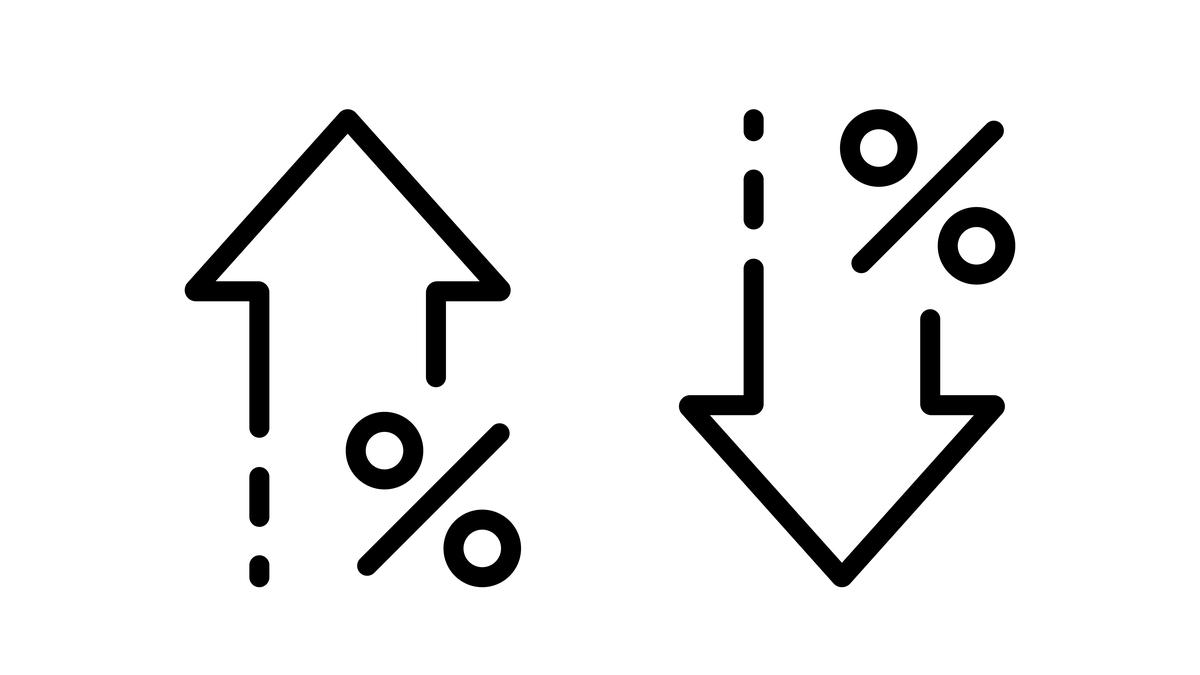
- 29 Oct 2024
Overview
The Economic Advisory Council to the Prime Minister (EAC-PM)'s report titled "Relative Economic Performance of Indian States: 1960-61 to 2023-24" highlights an alarming trend of widening economic disparities across India's states, which is increasingly threatening the principles of federalism and national unity. The findings reveal significant regional imbalances in terms of contributions to the national income, per capita income, and overall economic development. This analysis delves into the key insights from the report and explores the broader implications for India's federal structure, governance, and policy approaches.
Key Insights from the Report
- Regional Economic Disparities:
- Western and Southern States' Dominance: States such as Maharashtra, Gujarat, Tamil Nadu, and Karnataka have consistently outperformed others. These states have benefited from higher private investments, better infrastructure, and a more business-friendly environment. They also enjoy proximity to international markets, especially coastal regions like Gujarat and Tamil Nadu, which have access to ports and export markets.
- Underperformance of Northern and Eastern States: On the other hand, northern states (with exceptions like Delhi and Haryana) and eastern states like Bihar, Odisha, and West Bengal lag behind in economic performance. These regions face challenges such as poor infrastructure, low levels of investment, and weak governance structures, which hinder their growth potential.
- Impact of Liberalization (1991):
- The 1991 economic reforms marked a shift toward market-oriented growth, benefiting states that were already more industrialized or had better urban infrastructure. Southern states, in particular, adapted well to the liberalized environment, attracting higher levels of private investment and expanding their economies.
- The liberalization process disproportionately favored urban centers like Delhi, Mumbai, Chennai, and Bengaluru, where investments were channelized into growing service sectors, technology, and industries, creating a feedback loop of wealth accumulation in these hubs. Meanwhile, the hinterland remained underdeveloped due to insufficient public investment and the lack of private sector interest in these regions.
- Investment Disparities:
- Private Investment: Wealthier states attract a disproportionate share of private investment, which is driven by profitability and market opportunities. These states have better infrastructure, which reduces transaction costs and increases returns on investment. In contrast, underdeveloped states struggle to attract investment due to poor governance, inadequate infrastructure, and perceived higher risks.
- Public Investment: While the public sector still plays a role in investment, the New Economic Policies (NEP) since 1991 have shifted the focus towards private sector-driven growth. This has further widened the investment gap, as the poorer states receive less public investment relative to their needs.
- Role of Infrastructure and Governance:
- The availability and quality of infrastructure are significant determinants of economic performance. States with better roads, energy supply, ports, and communication networks tend to attract more investments. Additionally, good governance, characterized by reduced corruption, better policy implementation, and transparency, also plays a critical role in fostering economic development.
- In contrast, states with weaker governance structures and poor infrastructure struggle to create an enabling environment for businesses, further compounding regional disparities.
- Impact on Federalism:
- The growing economic divide is leading to tensions between the Centre and state governments, particularly in wealthier states that contribute significantly to national income but feel short-changed in resource allocation. These states argue that they are not receiving a fair share of national resources in return for their contributions, leading to growing dissatisfaction with the federal system.
- The tension is exacerbated by political factors, such as accusations from opposition-led states that the Centre uses public investment to favor states aligned with the ruling party. The growing perception of politicization of resource allocation has the potential to undermine the spirit of cooperative federalism.
Structural Causes of Regional Inequality
- Economic and Investment Magnetism:
- Wealthier states attract more private investments, as they offer better returns due to established markets, skilled labor, and urbanization. Cities like Mumbai, Delhi, and Bengaluru serve as economic magnets, drawing talent, technology, and capital, which further consolidates their economic dominance.
- In contrast, states without such economic hubs or access to global markets struggle to attract investment. The absence of urban agglomerations and the concentration of wealth and resources in a few states perpetuate regional disparities.
- Policy and Investment Bias:
- Post-liberalization policies have disproportionately benefited the organized sector, often at the expense of the unorganized sector, which is more prevalent in poorer states. The emphasis on industrial growth and infrastructure development has largely bypassed the rural and informal sectors, which are critical in underdeveloped states.
- The organized sector has also benefited from government support, such as tax concessions and subsidized infrastructure, which have enabled these industries to thrive in already developed regions. This has widened the gap between the haves and the have-nots.
- Cronyism and the Black Economy:
- Crony capitalism and the prevalence of the black economy in poorer states further exacerbate regional imbalances. In some cases, political patronage and corruption divert resources and investments from areas that need them most. This weakens the investment climate, especially in states with higher levels of informal and illegal economic activity.
Implications for Federalism
The growing economic disparity poses a serious threat to India's federal structure. The increasing dissatisfaction of wealthier states with the current fiscal arrangements and the growing demand for fairer resource allocation challenge the spirit of cooperative federalism. A well-functioning federal system relies on equitable distribution of resources and opportunities for all regions to develop.
Policy Recommendations
To address these disparities and strengthen India's federal framework, several policy measures need to be implemented:
- Enhancing Governance and Infrastructure in Lagging States:
- Improved governance and reducing corruption are essential in attracting both private and public investments. Additionally, there must be a focus on developing critical infrastructure, such as roads, energy, and health facilities, which are essential for economic growth.
- States need to increase public investment in sectors like education, healthcare, and social security to improve human capital and productivity.
- Focus on the Unorganized Sector:
- A significant portion of the labor force in poorer states is employed in the unorganized sector. Policies should aim to formalize this sector by providing social security benefits, improving labor rights, and increasing productivity through skill development. This could help raise incomes and stimulate local demand, attracting more private investment.
- Balancing the Organized and Unorganized Sectors:
- While the organized sector has benefited from liberalization, more attention should be given to the unorganized sector, which forms the backbone of the economy in many poorer states. A balanced approach to economic growth, which includes both organized and unorganized sectors, can help reduce disparities.
- Shifting Focus from Urban Centers to Hinterlands:
- Private sector investment must be incentivized in underdeveloped regions through tax breaks, subsidies, and targeted infrastructure projects. This will encourage businesses to expand beyond the major urban centers, thus promoting a more balanced distribution of economic activities.
Conclusion
The widening economic divide in India, as revealed by the EAC-PM report, poses a significant challenge to the country's federalism and unity. To ensure inclusive and balanced development, policy reforms must focus on reducing regional disparities by improving governance, infrastructure, and investment in lagging states. A shift towards equitable growth, addressing the needs of both the organized and unorganized sectors, is essential to promoting national cohesion and ensuring sustainable economic progress across all regions.
Strengthening the Anti-Defection Law to Uphold India's Democratic Integrity

- 28 Oct 2024
In News:
The Anti-Defection Law, introduced in 1985 through the 52nd Constitutional Amendment, aims to curb political instability caused by legislators switching parties for personal or financial reasons. While the law has helped maintain political stability, it faces several challenges, including delays in decision-making, potential bias in adjudication, and lack of transparency in party directives. These issues undermine its effectiveness in safeguarding democratic integrity.
Historical Context and Genesis
The issue of political defections, exemplified by the term "Aaya Ram, Gaya Ram," traces its origins to the 1960s when frequent party-switching destabilized governments. To address this, the Anti-Defection Law was enacted in 1985, disqualifying members who voluntarily gave up their party membership or defied party whips on critical votes. Initially effective in reducing defections, the law has faced challenges due to emerging loopholes, particularly regarding party "splits" and "mergers."
Gaps and Loopholes in the Current Law
One major loophole was the provision allowing a party split if one-third of its members defected, exploited until the 91st Amendment in 2003, which increased the threshold for mergers to two-thirds. Despite this change, defections continue, particularly through "mergers." Another issue is the role of the Speaker in deciding disqualification petitions. Given that the Speaker is often affiliated with the ruling party, their decisions are sometimes seen as biased, leading to delays in resolving defection cases. Additionally, the lack of transparency in issuing party whips has caused disputes regarding their legitimacy.
Proposed Reforms
To address these challenges, two key amendments are proposed:
- Fixed Time Frame for Decision-Making: A clear time frame—such as four weeks—should be established for the Speaker or an adjudicatory body to resolve defection cases. If no decision is made within this period, defecting members should automatically be disqualified.
- Transparency in Whips: Political parties should be required to make the issuance of whips public, either through newspaper publications or electronic communication, to ensure that members are fully informed of party positions on critical votes.
Ethical Concerns and Impact on Democracy
While the Anti-Defection Law was introduced to promote political stability, it has inadvertently stifled internal dissent within parties. Legislators are often forced to follow party lines, even when their personal convictions or constituents' interests conflict. This limits their freedom of expression and undermines the representative nature of democracy. Furthermore, the law has not fully curbed unethical practices such as "poaching" of members or defectors seeking personal gain, which continue to destabilize governments and erode public trust in the system.
The Way Forward: Political Will and Comprehensive Reforms
To strengthen the Anti-Defection Law, reforms must balance party discipline with individual freedoms. Key steps include:
- Independent Adjudication: Establishing an independent tribunal to handle defection cases can reduce political bias and expedite the decision-making process.
- Clear Timeframes: Setting a fixed timeline for resolving defection cases will prevent delays and ensure accountability.
- Transparency in Whip Issuance: Ensuring public notice of party whips will reduce ambiguity and disputes.
- Promoting Ethical Conduct: Strengthening ethical guidelines to discourage "poaching" and protect the integrity of the electoral process.
16th BRICS Summit

- 25 Oct 2024
In News:
Recently, the 16th BRICS Summit was held in Kazan, Russia.
Key Highlights:
Overview of the Bilateral Meeting between PM Modi and President Xi
- Location & Context: The meeting took place on the sidelines of the 16th BRICS Summit in Kazan, Russia (October 23, 2024), marking the first bilateral interaction between PM Modi and President Xi Jinping in nearly five years.
- Significance: The meeting focused on India-China relations, specifically the border dispute that arose following the 2020 standoff in Ladakh.
- Agreement on Border Disengagement: Both leaders welcomed an agreement for "complete disengagement" along the Line of Actual Control (LAC), which could pave the way for the resolution of issues that emerged after the Galwan Valley clashes in June 2020.
Key Points of the India-China Border Pact
- Resolution of Border Issues: The agreement addresses longstanding disputes, including in Depsang Plains and Demchok, where Chinese forces had encroached on Indian territory.
- Restoration of Patrolling: Both nations agreed to restore patrols to old patrolling points (PPs) along the LAC in these disputed areas.
- Next Steps: The Special Representatives (SRs) on the India-China boundary will meet soon to oversee the management of peace and tranquility in the border areas and explore mutually acceptable solutions.
- Diplomatic Mechanisms: Dialogue mechanisms at the foreign ministers and other official levels will be utilized to stabilize and rebuild bilateral relations, contributing to regional and global stability.
Strategic Importance of the Bilateral Meeting
- Maintaining Peace and Stability: PM Modi emphasized that differences between India and China should be managed carefully to ensure that broader peace and tranquility are maintained.
- Global Impact: Both leaders affirmed that stable India-China relations would have a positive impact on regional and global peace and contribute to a multipolar world.
- Long-Term Strategic Perspective: The leaders discussed progressing bilateral relations from a strategic perspective, enhancing communication, and exploring cooperation to address developmental challenges.
Key Takeaways from the 16th BRICS Summit
- Expansion and New Membership: The summit saw the inclusion of five new members—Egypt, Ethiopia, Iran, the UAE, and Saudi Arabia (pending formalization). This expansion reflects BRICS’s growing influence as a forum representing the Global South.
- Focus on Multilateralism: Leaders emphasized multilateral cooperation to address challenges such as global security, economic growth, and sustainable development.
- Kazan Declaration: The declaration touched upon key issues:
- Geopolitical Conflicts: It called for dialogue and diplomacy to resolve disputes like the Ukraine crisis and the West Asia conflict.
- Sanctions and Trade: Criticized unilateral sanctions and their disruptive effects on global trade and development goals.
- Grain Exchange: A proposal was made to establish a BRICS Grain Exchange, aimed at improving agricultural trade among member states.
- Financial Integration: There was a push for greater financial integration through the use of local currencies for trade, exemplified by India’s UPI system as a successful model.
Importance of BRICS in the Global Context
- Global Influence: BRICS continues to be a key player in global geopolitics, representing 40% of the world’s population and 26% of global GDP (as of 2023).
- Strategic Goals: BRICS has consistently called for reform of international institutions like the UNSC, IMF, and World Bank, advocating for a more equitable global governance structure.
- Economic Collaboration: The New Development Bank (NDB), established in 2015, continues to play a vital role in funding development projects across BRICS countries, though the group’s influence in global finance remains limited compared to the World Bank.
Challenges Facing BRICS Expansion
- Geopolitical Contradictions: The inclusion of diverse new members (e.g., UAE, Egypt, Iran) could complicate decision-making due to geopolitical rivalries.
- Decision-Making Hurdles: Achieving consensus among an expanding membership will become more challenging. The expansion may dilute the cohesiveness of the group, as seen in other multilateral forums like the Non-Aligned Movement (NAM) and G77.
- De-Dollarisation Efforts: While BRICS aims to de-dollarize trade and reduce reliance on the SWIFT system, efforts to develop alternatives like a BRICS payment system and BRICS currency are still in nascent stages.
- Economic Disparities: Economic gaps among members—China’s GDP is significantly larger than the combined GDP of other members—could also create imbalances in decision-making.
India’s Role and Strategic Positioning in BRICS
- Geopolitical Balancing: India's participation in BRICS is a strategic maneuver to balance its global position and strengthen ties with emerging economies, particularly in the Global South.
- Diplomatic Relations with Russia: India continues to prioritize its relationship with Russia, which remains crucial for regional security and energy cooperation.
- India-China Ties: The agreement on the India-China border represents a significant shift in relations, with potential for a reset in Sino-Indian ties.
Key Themes in the Kazan Declaration
- Global Governance: Calls for reforming global institutions to give developing nations more representation.
- Energy and Sustainability: Proposals for strengthening energy cooperation, including the creation of energy corridors and the promotion of sustainable energy practices.
- Security: Emphasized the need for universal security by addressing the security concerns of all nations and promoting dialogue over confrontation.
Conclusion: Future of India-China and BRICS Relations
- India-China Relations: The border disengagement pact is a critical step towards stabilizing the India-China relationship, with potential positive impacts on regional security and global geopolitics.
- BRICS’s Growing Influence: As BRICS expands, it faces internal challenges but remains a potent voice for the Global South, aiming to reshape global governance and financial systems.
- India’s Strategic Positioning: India is likely to play a pivotal role in BRICS, especially as the group’s focus shifts towards regional stability, economic cooperation, and de-dollarization in the coming years.
Stubble Burning and the Supreme Court's Ruling: Protecting the Right to a Pollution-Free Environment

- 24 Oct 2024
Introduction
Recently, the Supreme Court of India expressed serious concerns about the ongoing issue of stubble burning in the states of Punjab and Haryana. The Court criticized the selective enforcement of penalties for stubble burning and emphasized that such practices violate citizens' fundamental right under Article 21 of the Indian Constitution, which guarantees the right to live in a pollution-free environment.
Court’s Observations on Stubble Burning
- The Supreme Court highlighted the failure of state governments in effectively implementing laws against stubble burning.
- Selective Enforcement: The Punjab and Haryana governments were accused of prosecuting only a few violators while allowing many others to escape punishment by paying a nominal fine.
- The Court observed that this approach is a blatant violation of the right to live in a pollution-free environment, which is guaranteed under Article 21 of the Constitution.
Right to a Pollution-Free Environment
- The Court emphasized that every citizen has the fundamental right to live in an environment free from pollution, as mandated by Article 21 of the Constitution.
- The Court questioned the effectiveness of current environmental regulations, specifically pointing out the lack of proper machinery to collect fines under Section 15 of the Environment (Protection) Act, 1986.
Impact of Stubble Burning
Stubble burning, primarily in the northern states of India, exacerbates air pollution, especially in Delhi and surrounding regions. The seasonal spike in air pollution during the months of October and November is largely attributed to farm fires. This not only worsens the air quality but also has severe implications for public health.
Environmental and Health Consequences
- Air Pollution: The burning of crop residues significantly contributes to the rise in PM2.5 and PM10 levels, leading to hazardous air quality.
- Soil Health: Burning crop residues depletes essential nutrients from the soil, reducing organic carbon content and harming soil fertility.
Health Risks
- Exposure to pollutants like particulate matter (PM) can lead to respiratory problems, heart diseases, and other health complications for the population, especially in densely populated areas like Delhi.
Legal and Institutional Shortcomings
- Inadequate Implementation: Despite laws and penalties being in place, the lack of an effective enforcement mechanism has resulted in the persistence of stubble burning.
- Toothless Penalties: The Supreme Court criticized the amended Section 15 of the Environment Protection Act, 1986, which replaced criminal penalties with financial fines for environmental violations. However, the lack of rules and appointed adjudicating officers has rendered this provision ineffective.
- No Serious Enforcement: The failure of the Central government and state authorities to implement effective penalties has led to widespread non-compliance with environmental laws.
Government Actions and Responses
Centre’s Efforts:
- The Central Government has introduced a Central Sector Scheme to promote agricultural mechanization for in-situ management of crop residue in Punjab, Haryana, Uttar Pradesh, and Delhi.
- The government provides financial assistance of up to 50% for the purchase of machinery, such as the Happy Seeder, to manage paddy stubble without burning.
- A total of ?3,062 crore has been released from 2018 to 2023 to tackle stubble burning.
State-Level Actions:
- The Punjab government has introduced cash incentives for farmers who refrain from burning stubble. Additionally, the state is offering non-fiscal incentives, such as access to panchayat land for storing paddy straw.
- The Pusa Decomposer, developed by the Indian Agricultural Research Institute (IARI), is a bio-enzyme used to decompose crop residue. It helps in turning the stubble into manure within 20-25 days, enhancing soil health.
Challenges for Farmers:
- Many farmers still prefer burning stubble due to high costs associated with alternative methods of residue management.
- The Happy Seeder and other machinery remain expensive and are not affordable for most small-scale farmers, leading them to resort to burning as the most cost-effective option.
Court’s Directive and the Way Forward
- The Supreme Court directed the Centre and state governments to ensure better enforcement of laws related to air pollution, vehicular emissions, and industrial pollution.
- The Court also urged the Union Government to consider Punjab’s request for additional funds to tackle the stubble burning issue and to strengthen the enforcement mechanism.
- Urgency for Action: The Court’s observations suggest that the existing framework needs urgent reforms to protect citizens’ right to a pollution-free environment.
Constitutional Provisions Related to Environmental Protection
India’s Constitution provides several provisions to ensure the protection of the environment:
Article 21: Right to Life and Environment
- In the landmark case Subhash Kumar v. State of Bihar (1991), the Supreme Court held that the right to life under Article 21 includes the right to a wholesome environment.
- This view was reiterated in Virender Gaur v. State of Haryana (1994), further strengthening the legal framework for environmental protection.
Directive Principles of State Policy
- Article 48A: The State is mandated to protect and improve the environment and safeguard forests and wildlife.
- Article 39(e) and 47: These Articles place a duty on the State to promote public health and ensure environmental protection.
Fundamental Duties
- Article 51A(g) places a duty on citizens to preserve and protect the environment.
Conclusion
The Supreme Court’s ruling highlights the urgent need for better implementation of environmental laws and the protection of citizens’ fundamental rights under Article 21. While government schemes are in place, a more robust and consistent approach is required to address the issue of stubble burning and air pollution. Immediate reforms in the enforcement mechanisms and incentives for farmers are crucial to achieve a sustainable, pollution-free environment in India.
Biodiversity COP16

- 23 Oct 2024
In News:
The Convention on Biological Diversity (CBD), while historically overshadowed by climate change discussions, is now gaining increasing attention due to the growing recognition of the global biodiversity crisis. This evolving prominence highlights the need for urgent action to preserve ecosystems and halt biodiversity loss, which is intimately linked with the climate crisis.
Overview of the Convention on Biological Diversity (CBD)
- Origins and Objectives:
- The CBD emerged from the 1992 Rio Earth Summit, alongside the UN Framework Convention on Climate Change (UNFCCC).
- Main Goals:
- Protect global biodiversity.
- Restore ecosystems.
- Ensure equitable distribution of the benefits derived from biological resources.
- COP16 and the Kunming-Montreal Framework:
- The 16th Conference of Parties (COP16) marks the first meeting following the Kunming-Montreal Global Biodiversity Framework adopted at COP15 in 2022.
- The framework sets out four key goals and 23 targets to be achieved by 2030, including:
- Protect 30% of global lands and oceans by 2030.
- Restore 30% of degraded ecosystems by 2030.
The Growing Convergence Between Climate Change and Biodiversity
- Interlinkages Between Climate Change and Biodiversity:
- Mutual Impact:
- Climate change accelerates biodiversity loss by altering habitats and threatening species.
- In turn, ecosystem degradation contributes to climate change by releasing greenhouse gases (GHGs) from deforestation and soil degradation.
- Shared Drivers:
- Both crises are driven by unsustainable human activities, including over-exploitation of natural resources, deforestation, over-consumption, and pollution.
- Increasing Synergy:
- There is a growing realization of the need for integrated solutions that address both climate change and biodiversity loss simultaneously.
- Momentum for 30 x 30 Targets
- The 30 x 30 Commitment:
- The 30 x 30 targets are central to the Kunming-Montreal Framework, which includes:
- Conservation of 30% of the world's lands and oceans.
- Restoration of 30% of degraded ecosystems.
- These targets aim to ensure the preservation of biodiversity-rich areas and the restoration of degraded ecosystems globally by 2030.
- National Biodiversity Strategies and Action Plans (NBSAPs):
- Countries are required to develop and submit their NBSAPs (akin to Nationally Determined Contributions (NDCs) for climate change).
- As of now, only 32 countries have submitted their NBSAPs, with more expected during COP16.
- High Seas Treaty:
- A crucial agreement for achieving 30 x 30 targets is the High Seas Treaty (also called Biodiversity Beyond National Jurisdictions (BBNJ)), which focuses on:
- Establishing protected marine areas in biodiversity-rich regions beyond national jurisdictions.
- Ensuring regulation of human activities in these areas.
Access and Benefit Sharing: The Case of Genetic Resources
- Genetic Resources and Their Exploitation:
- The oceans, along with terrestrial ecosystems, harbor a wide variety of genetic resources that can be exploited for medical, commercial, and scientific purposes.
- Advances in biotechnology and digital sequencing of genetic material have raised issues about the equitable sharing of benefits from these resources.
- Nagoya Protocol and Benefit Sharing:
- The Nagoya Protocol (2010) set out guidelines for the access and fair sharing of benefits derived from genetic resources.
- At COP16, discussions will center on how genetic sequences (used in products such as medicines, crops, etc.) can be used fairly, ensuring that indigenous communities, who may be the original custodians of these resources, benefit equitably.
Finance Mechanisms for Biodiversity Conservation
- Financial Targets:
- One of the key goals of the Kunming-Montreal Framework is to mobilize $200 billion per year by 2030 for biodiversity conservation globally.
- Developed countries are expected to contribute $20 billion annually to developing nations, increasing to $30 billion by 2030.
- Phasing Out Harmful Subsidies:
- Countries are urged to eliminate perverse incentives that harm biodiversity, such as subsidies for:
- Over-fishing.
- Deforestation.
- Fossil fuel consumption.
- The goal is to repurpose such incentives to support sustainable practices and conservation efforts.
- New Financial Mechanisms:
- COP16 discussions will also focus on creating innovative financial mechanisms, such as:
- A biodiversity fund.
- Biodiversity credits, similar to carbon credits, which would allow countries or organizations to offset their biodiversity loss by investing in conservation projects elsewhere.
Challenges and the Way Forward
- Implementation of 30 x 30 Targets:
- The main challenge lies in translating ambitious goals into actionable plans at the national and local levels. Countries must not only submit action plans but also implement and monitor them effectively.
- Increased Global Cooperation:
- Addressing biodiversity loss requires collaboration between countries, industries, and local communities to ensure that efforts are comprehensive and inclusive.
- Public Awareness and Engagement:
- It is crucial to raise awareness about the importance of biodiversity conservation and the urgent need for collective action to mitigate the combined threats of biodiversity loss and climate change.
Conclusion: The Need for Urgent Action
The discussions at COP16 signal an important shift in how the world addresses biodiversity and its links to climate change. As countries continue to recognize the interconnectedness of these two crises, the outcome of the CBD negotiations could play a pivotal role in shaping global environmental policy. However, meeting the ambitious goals set forth by the Kunming-Montreal Framework requires strong political will, adequate financing, and effective global cooperation.
